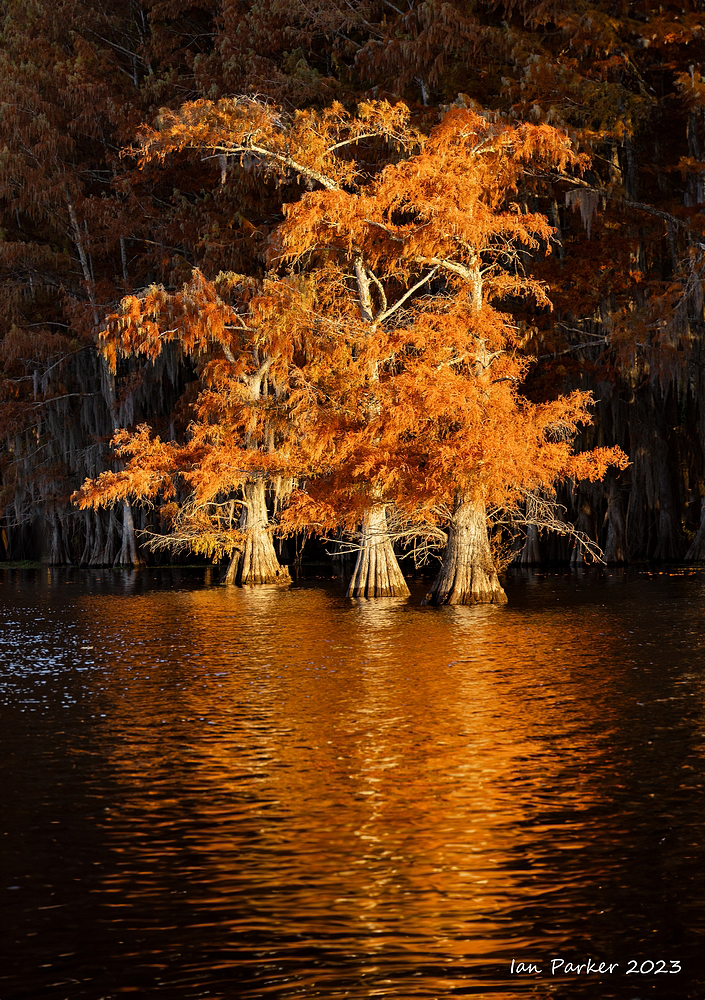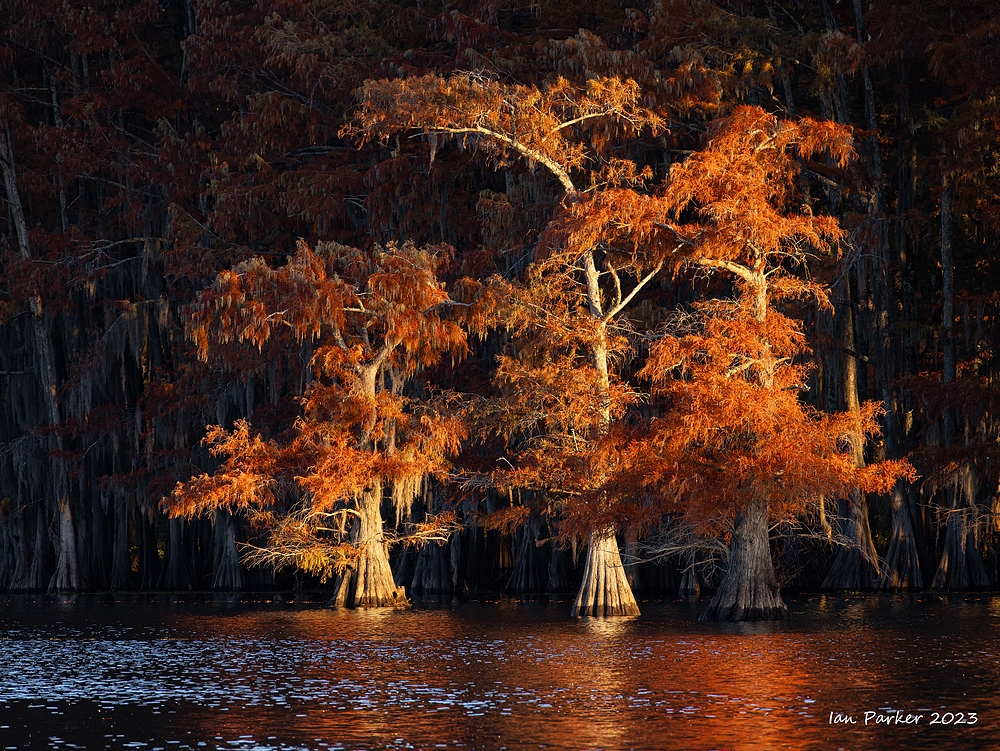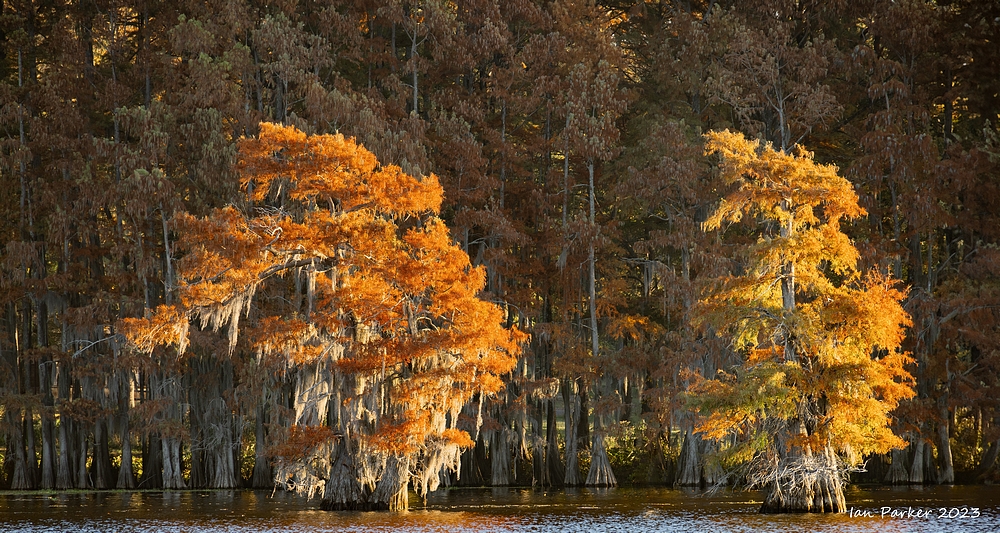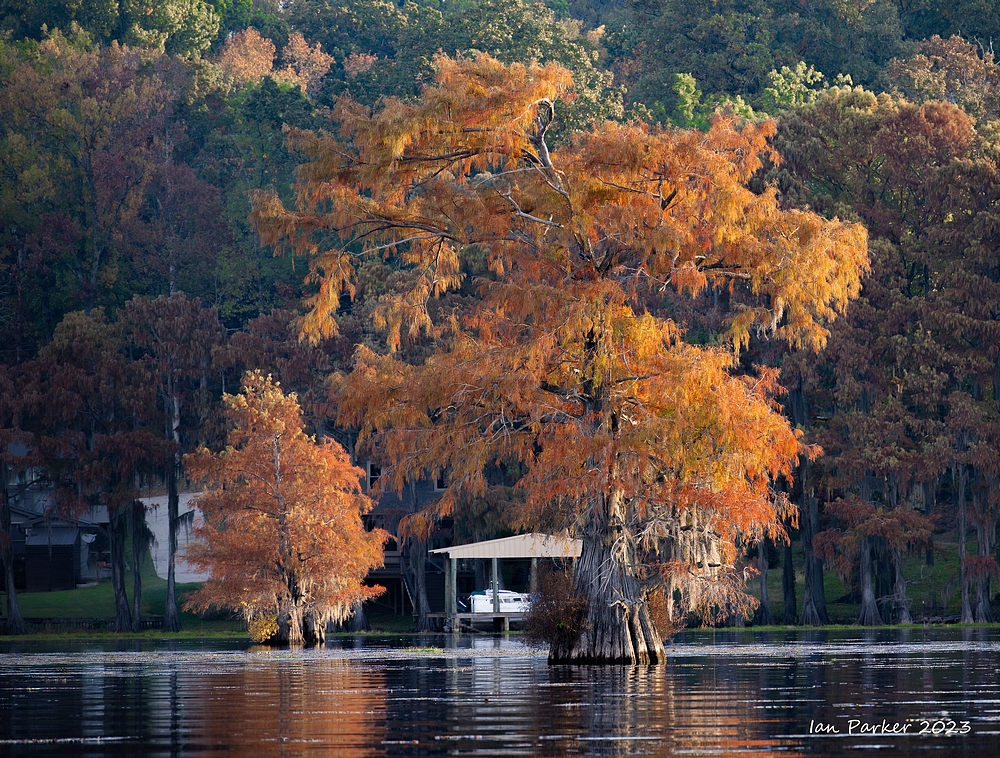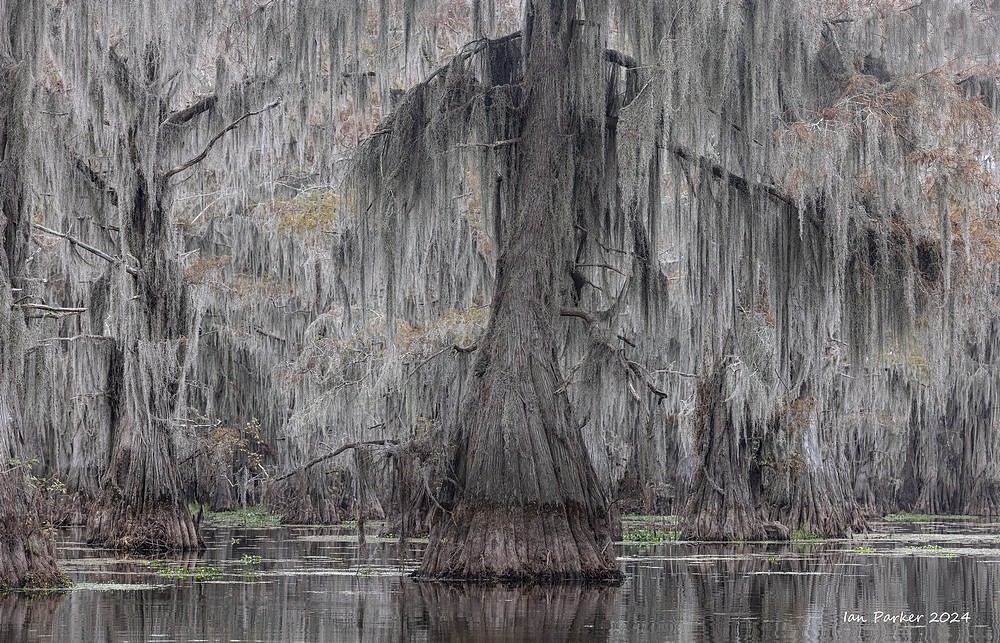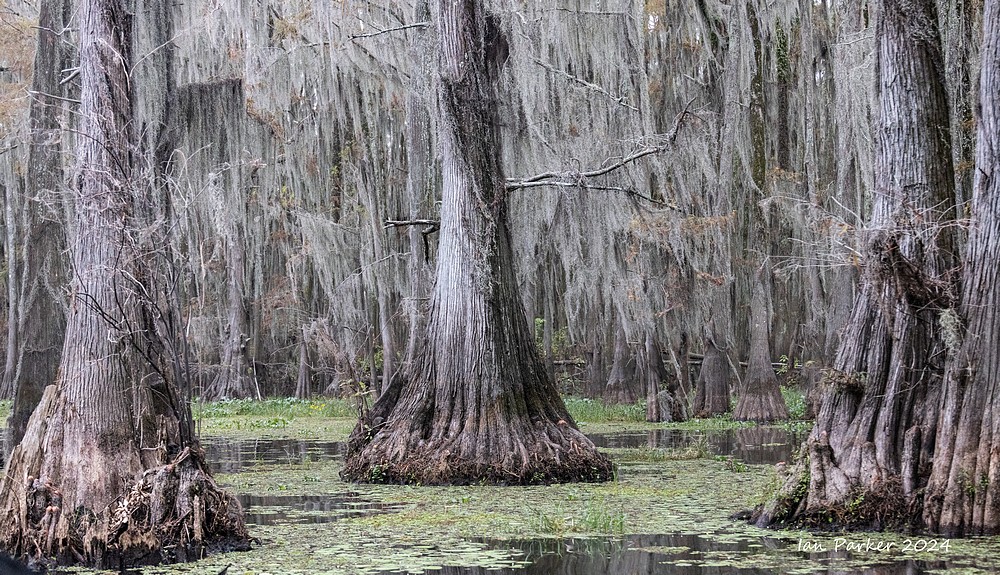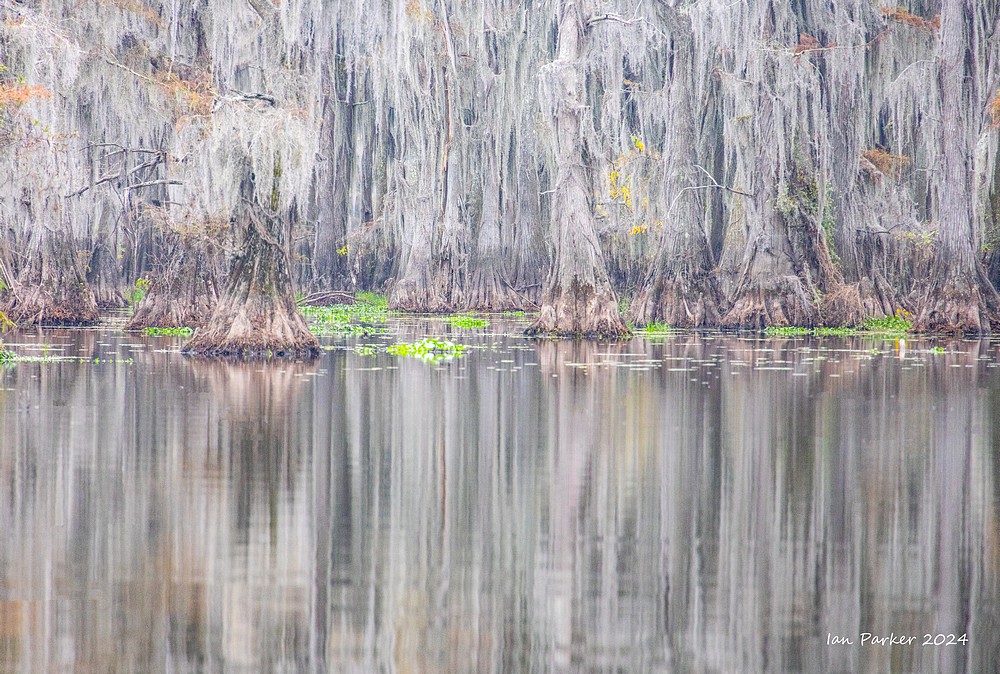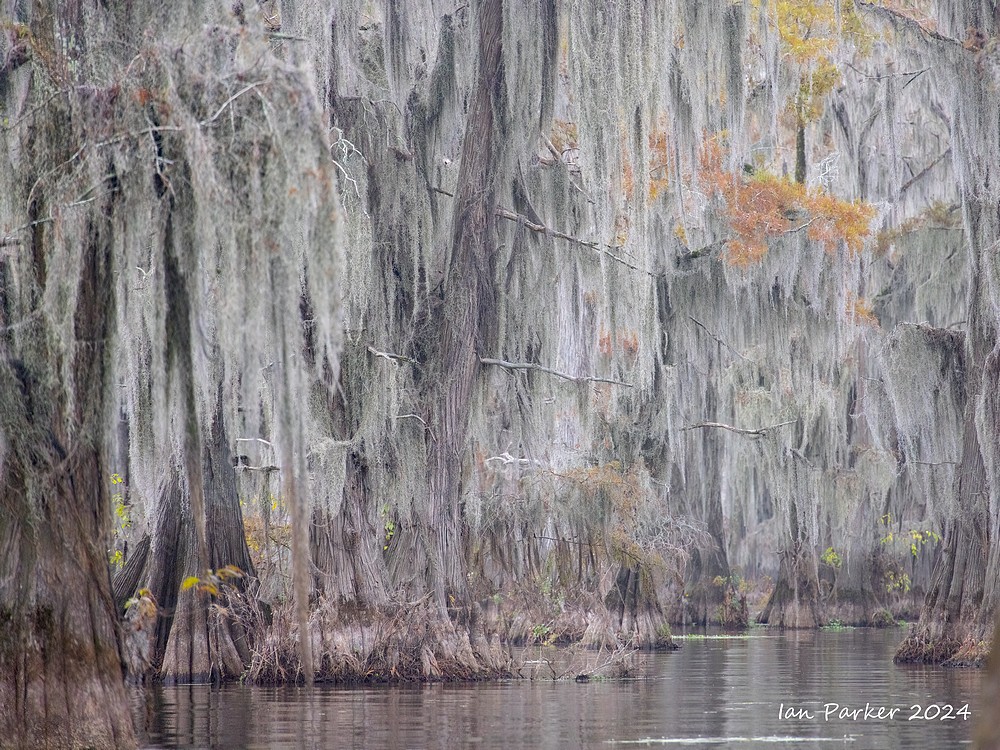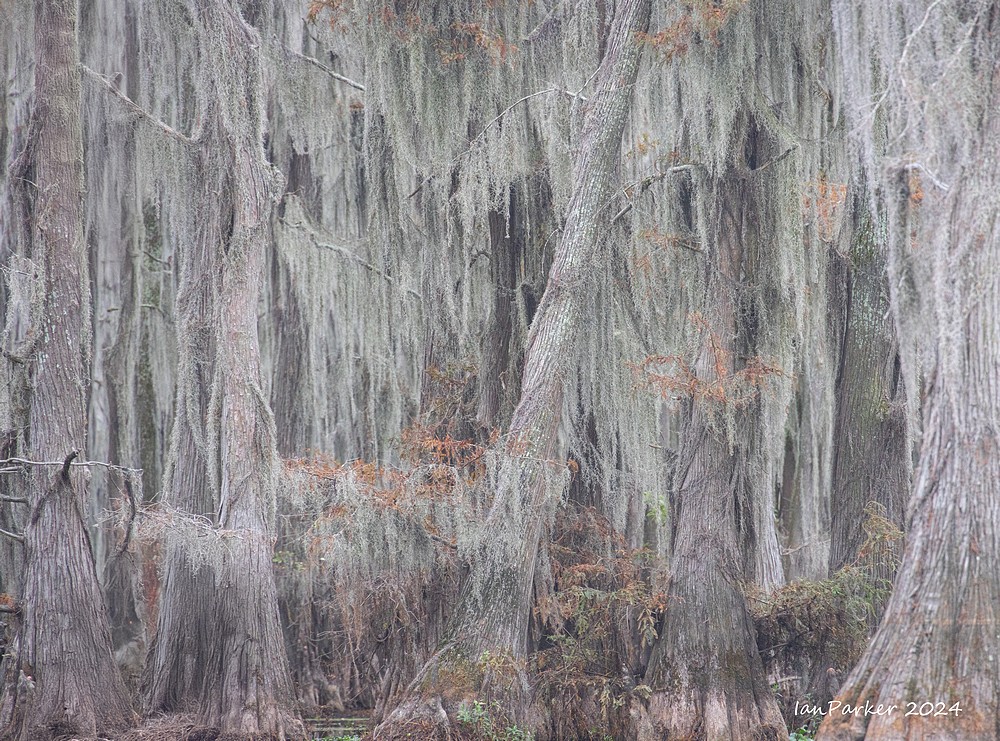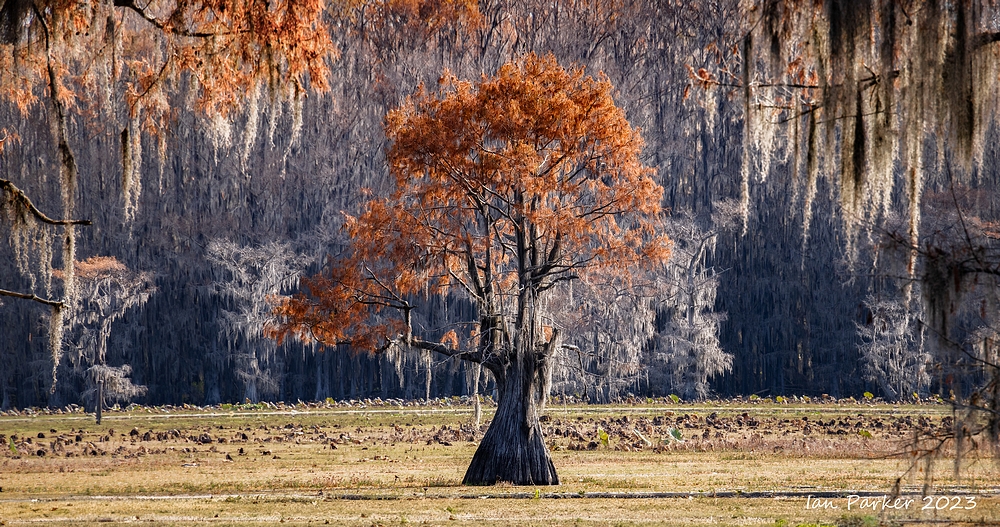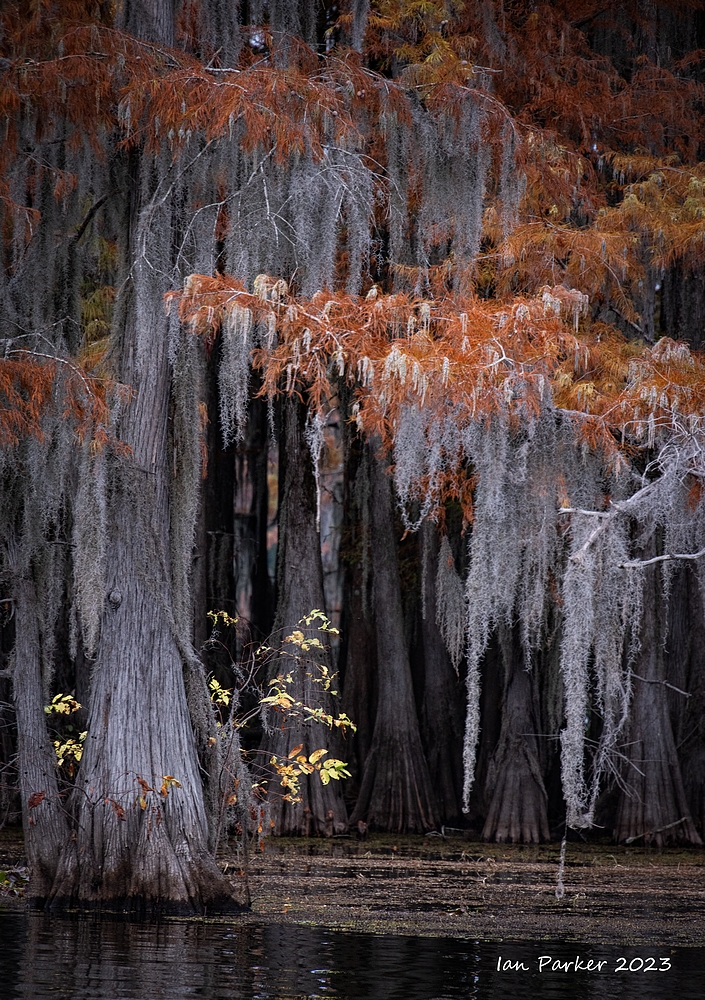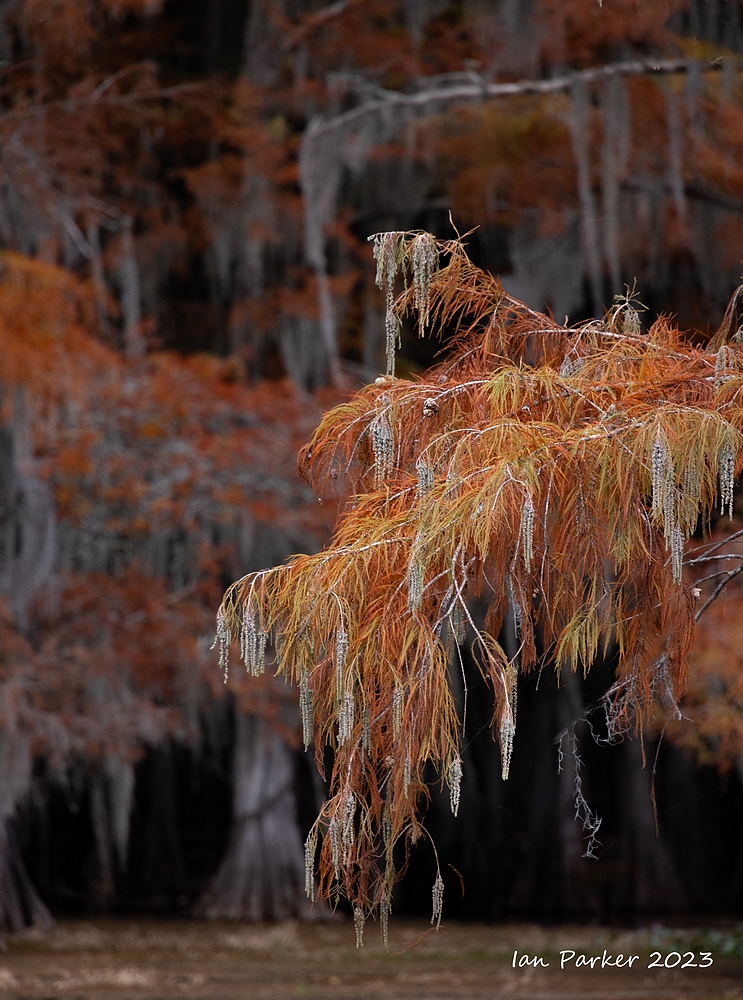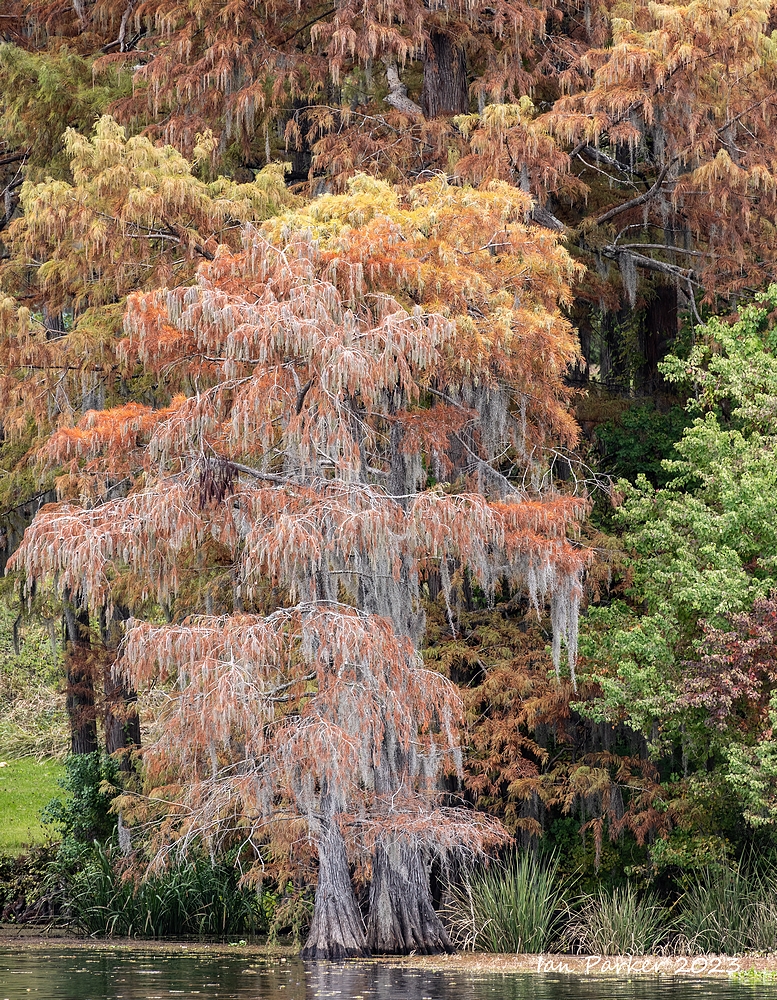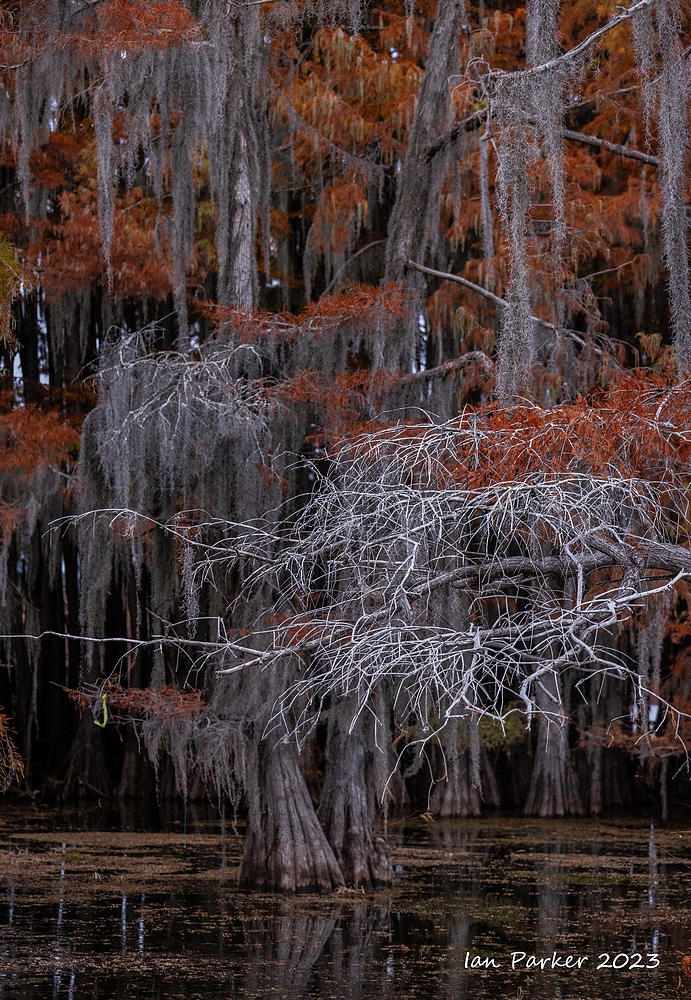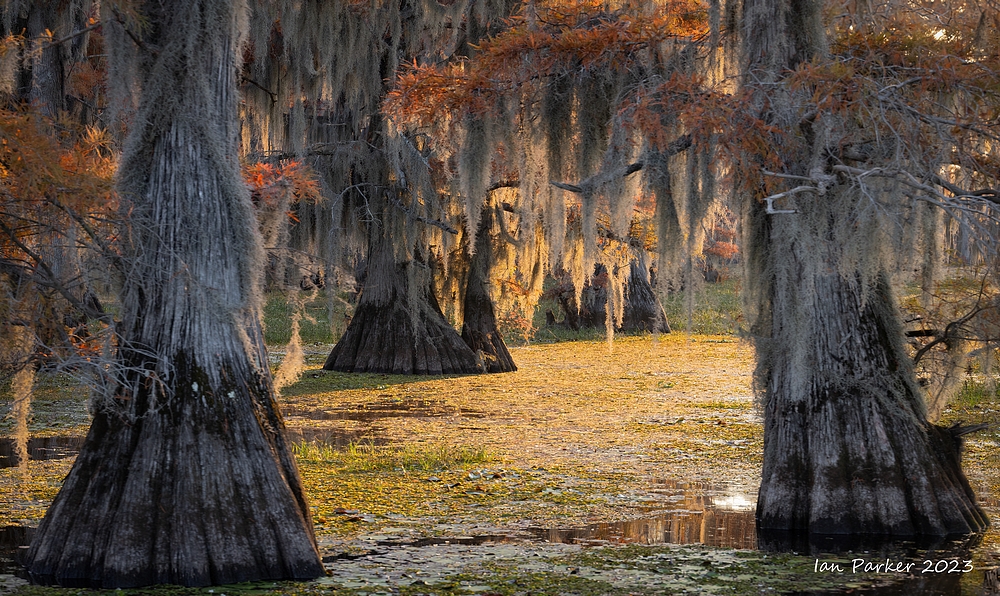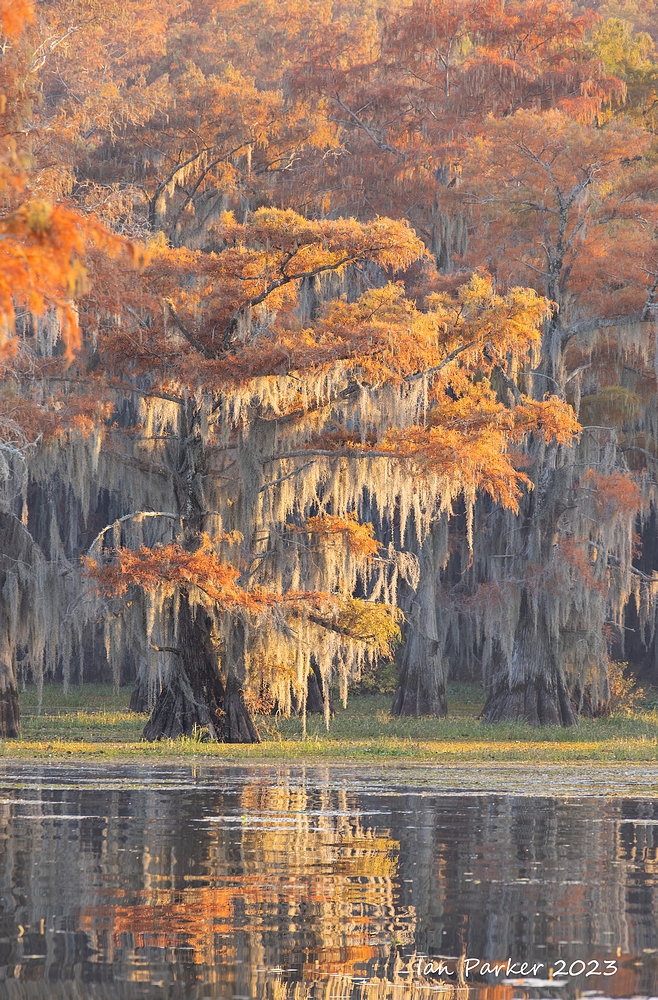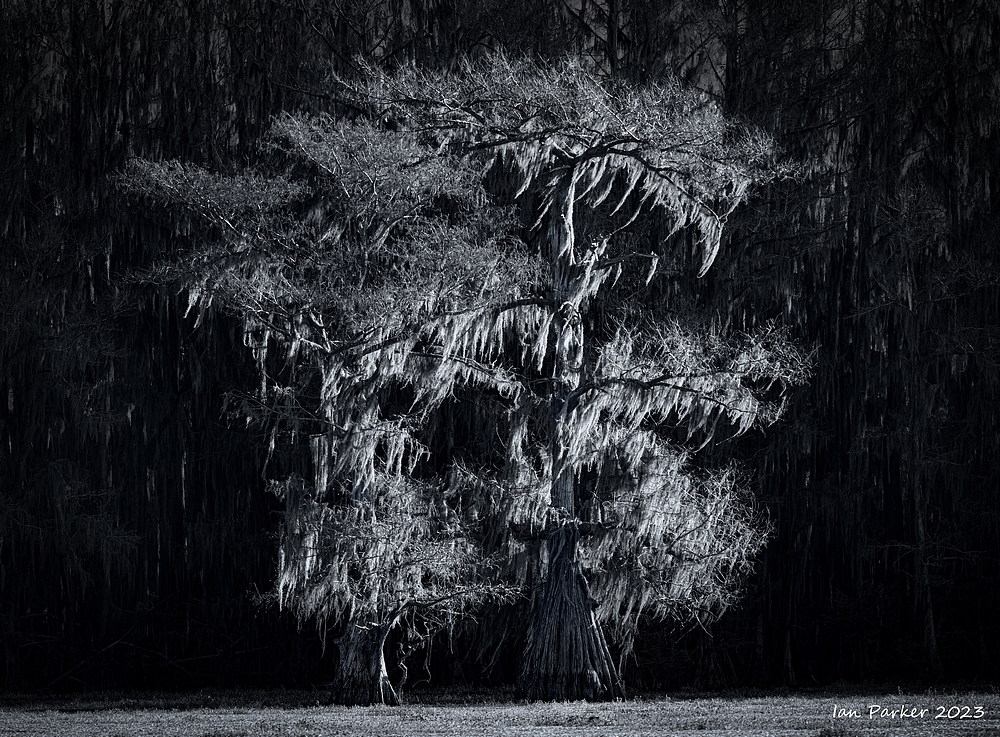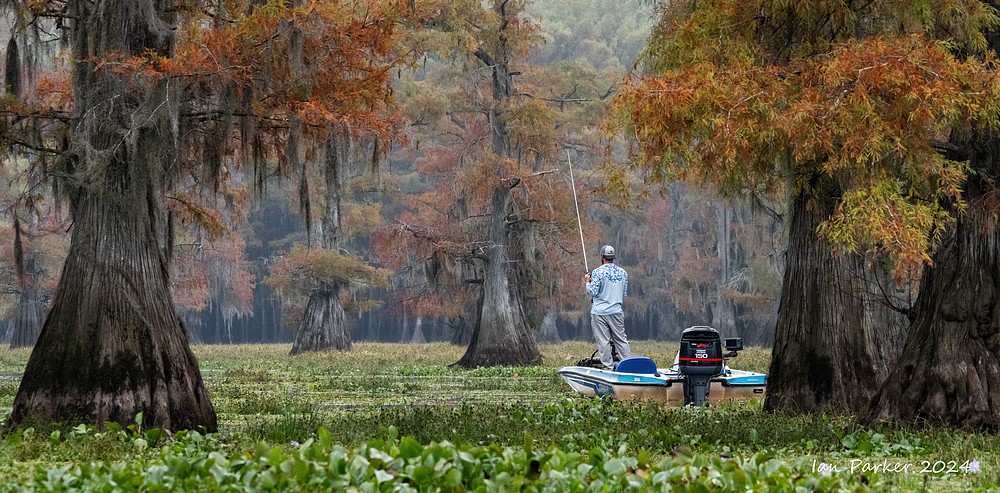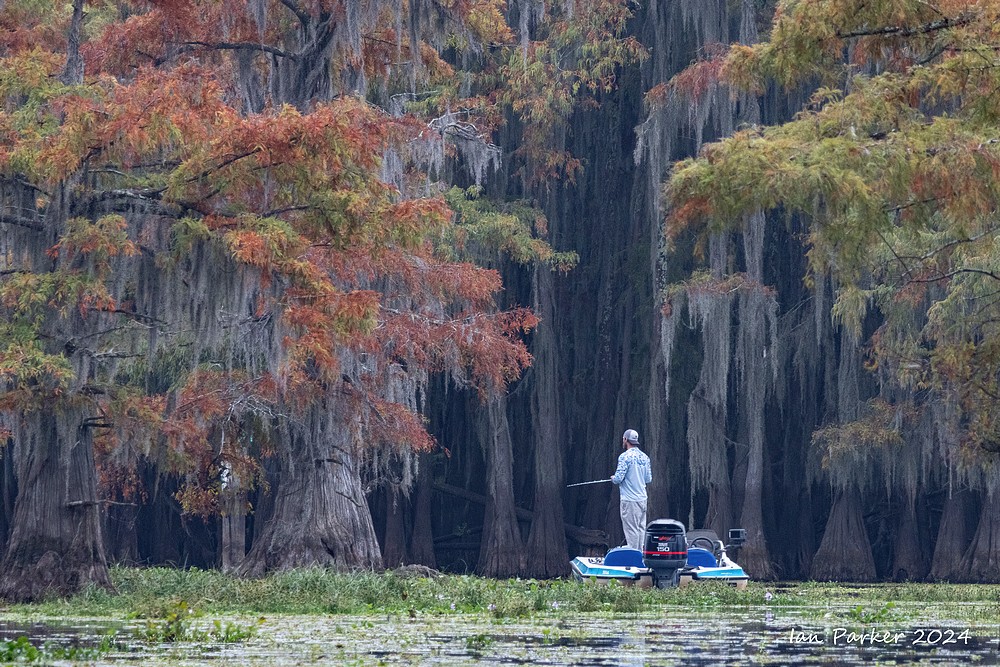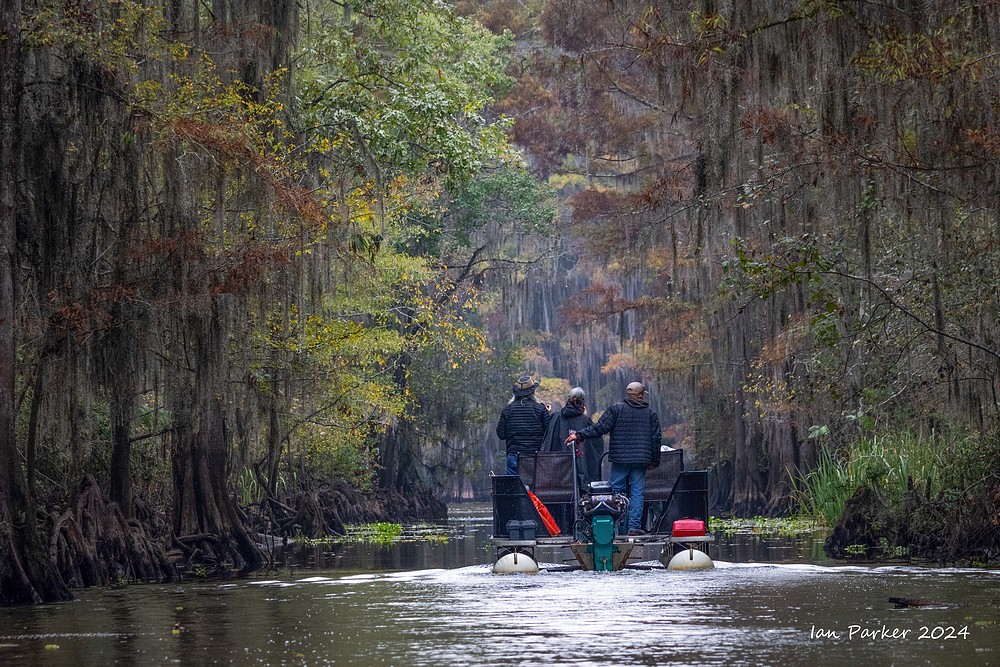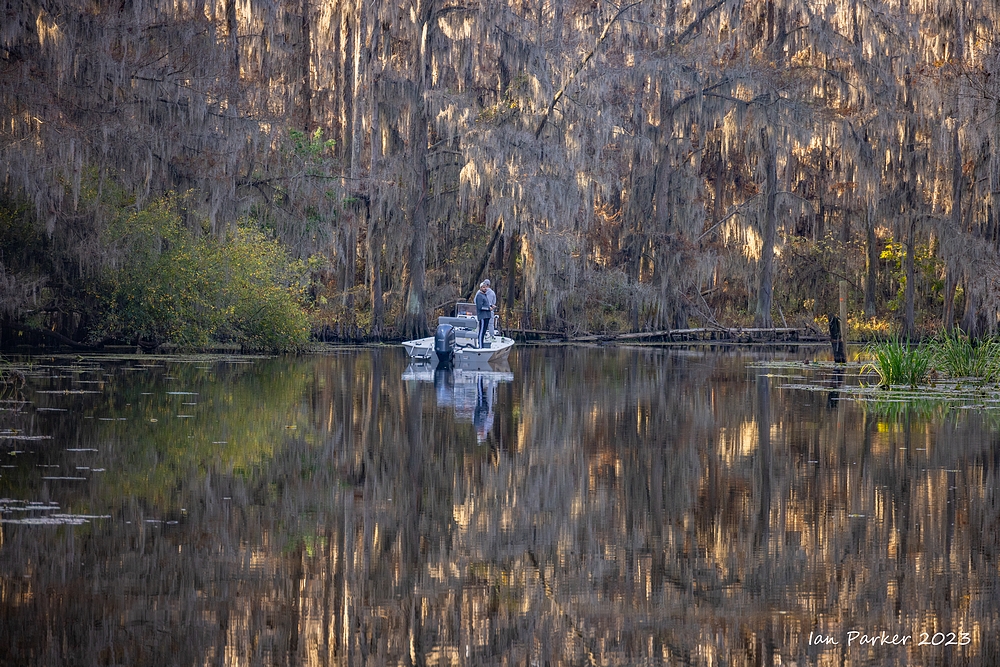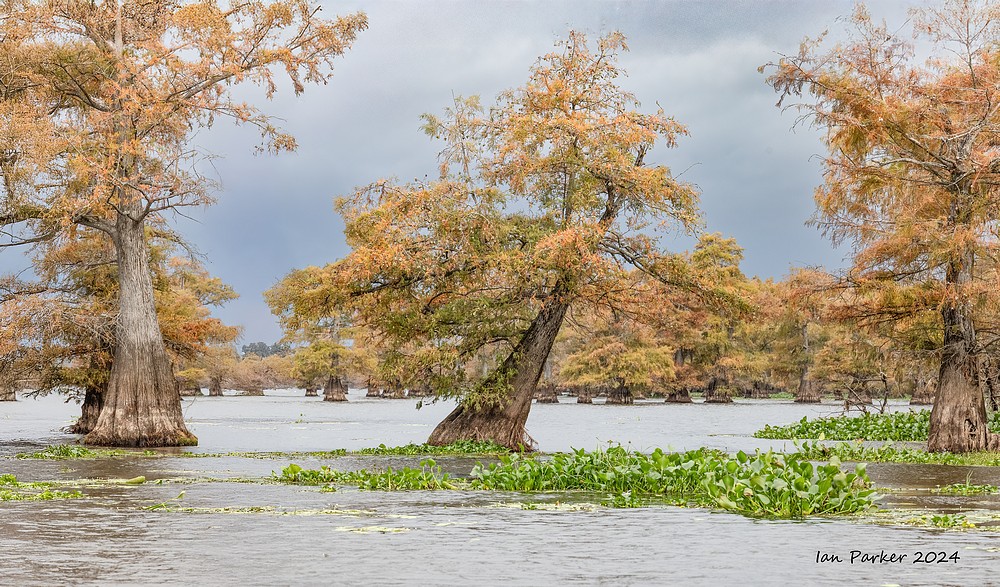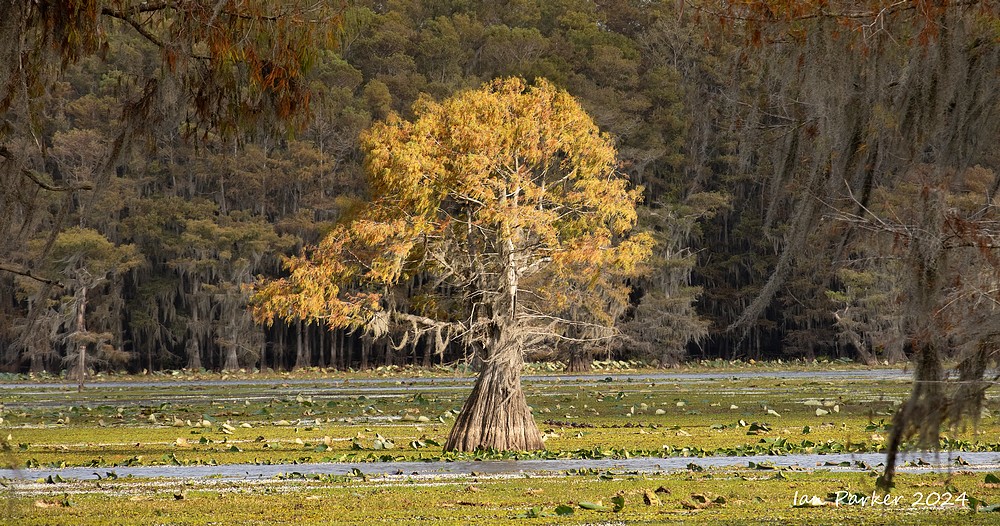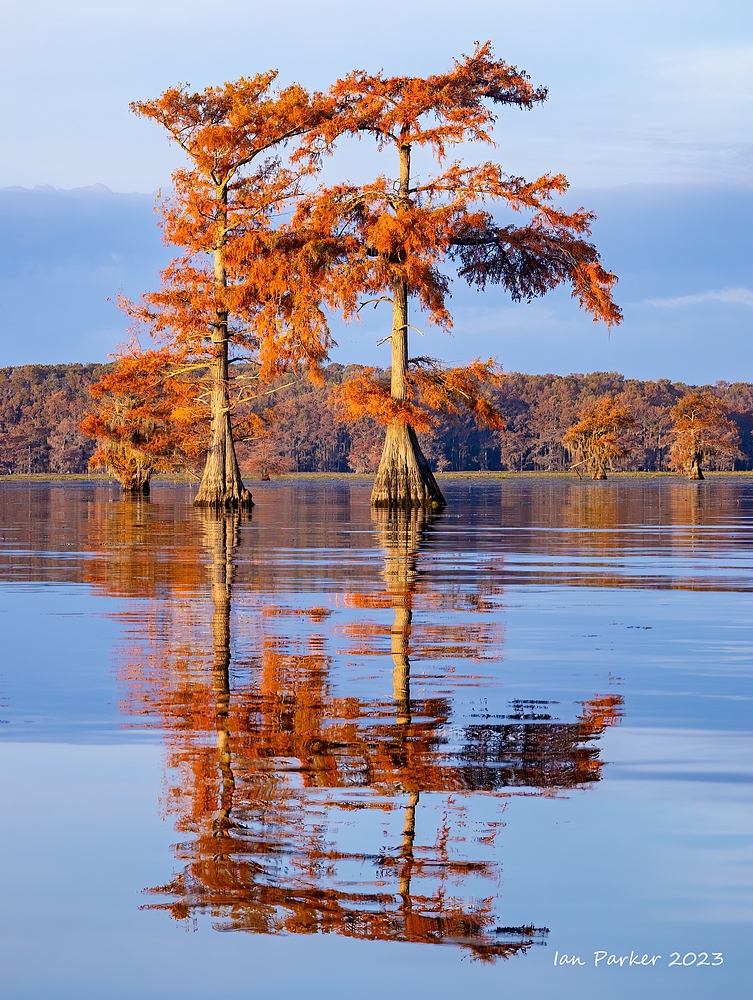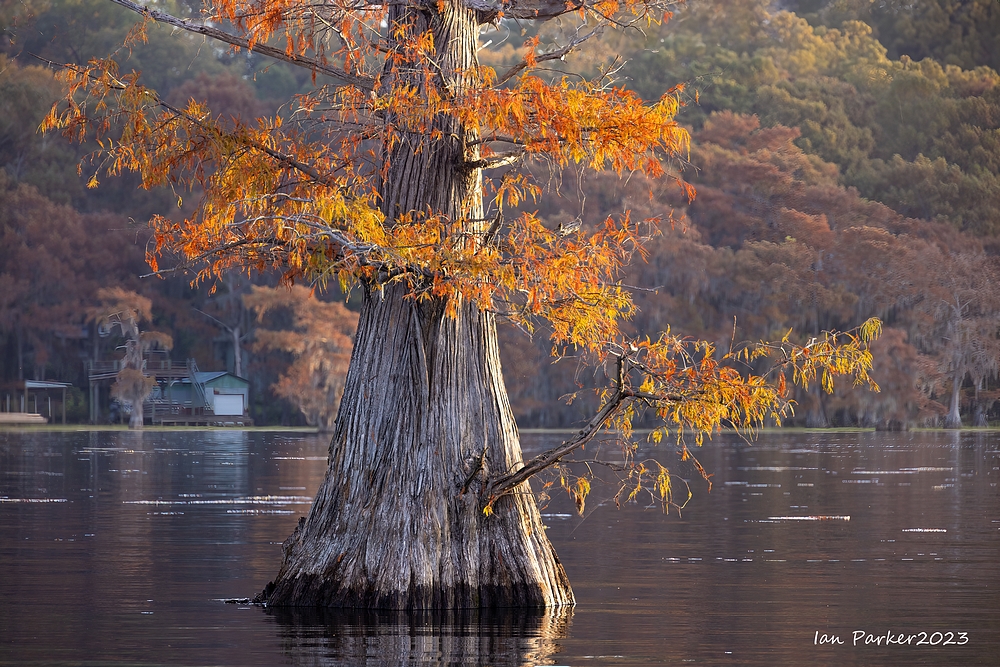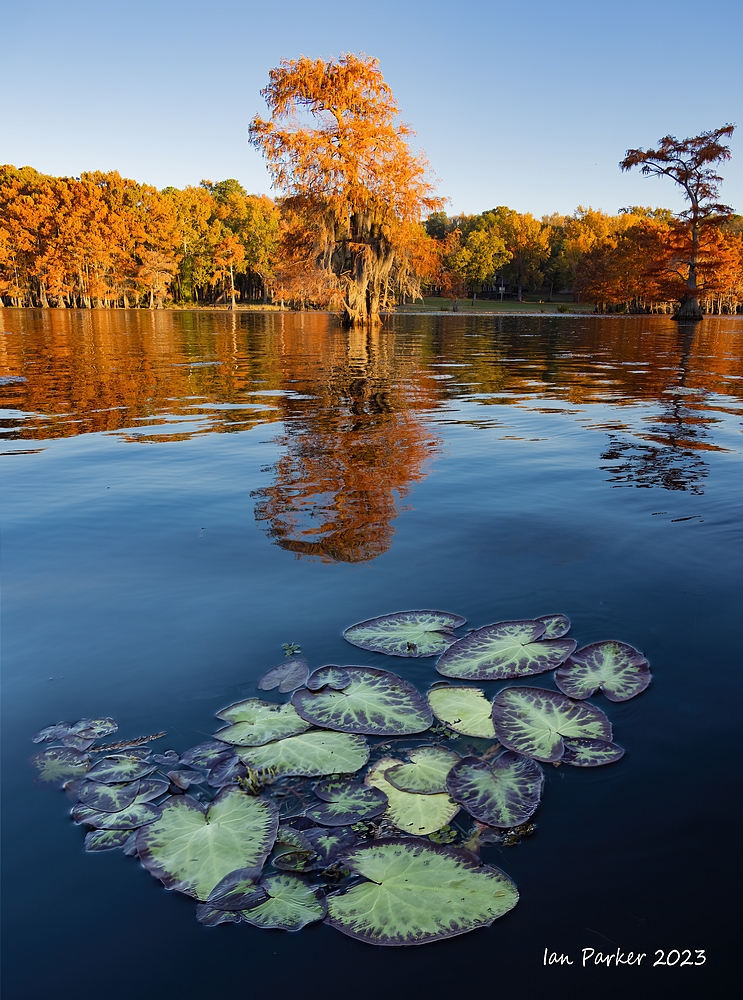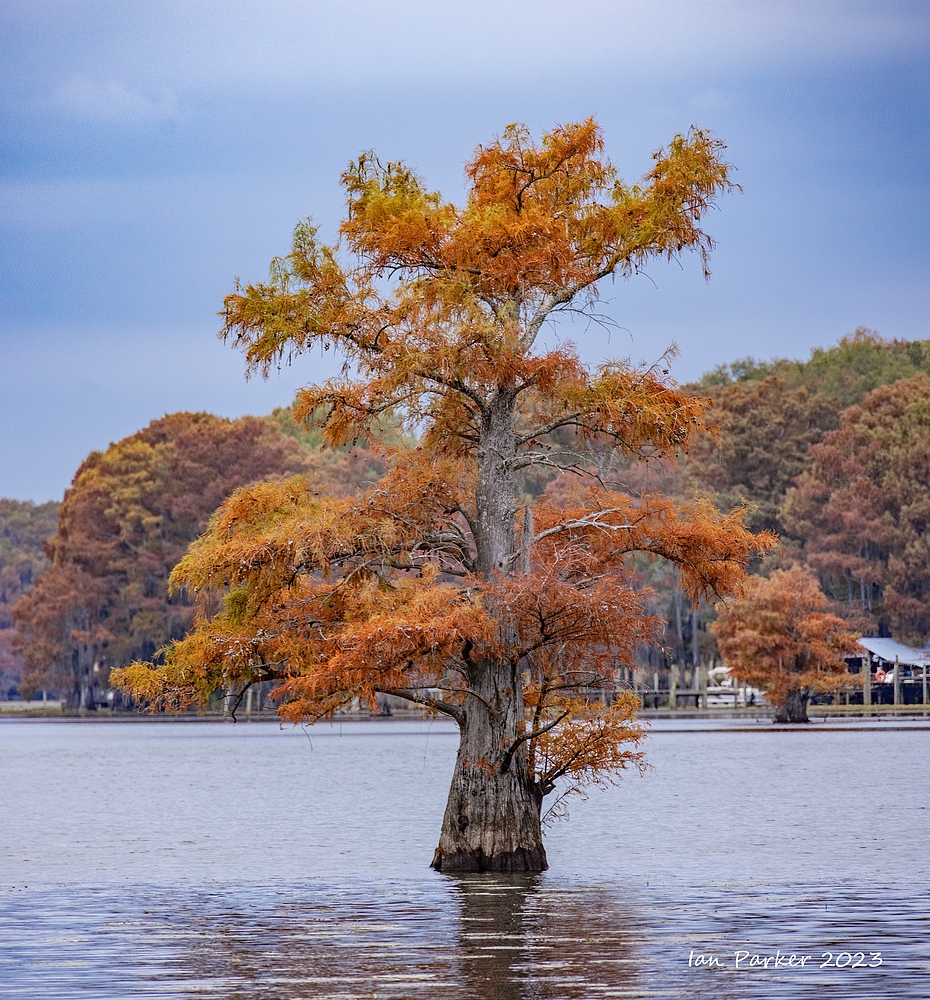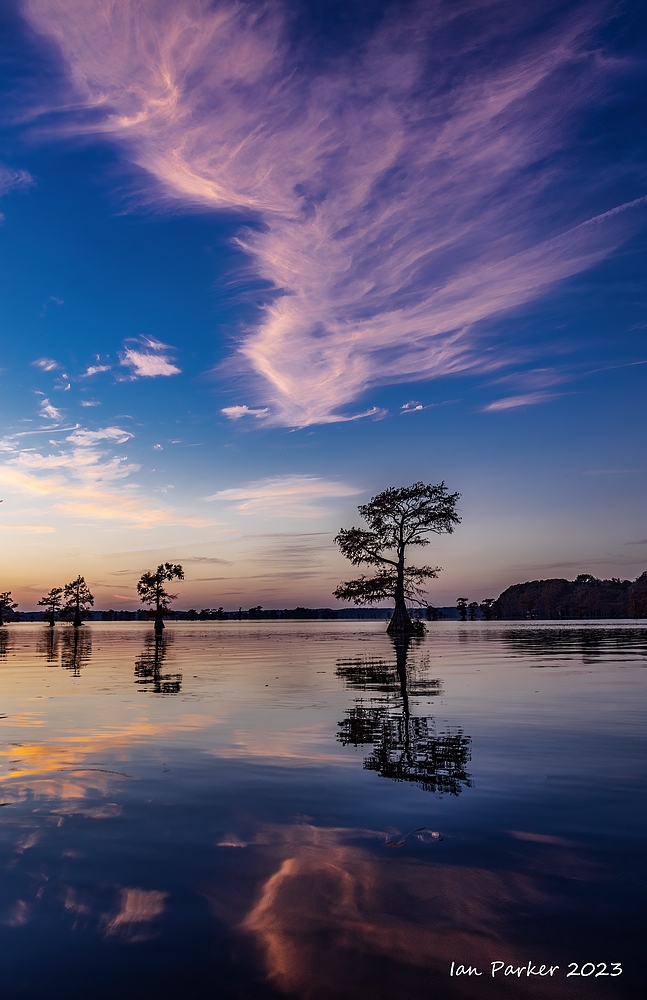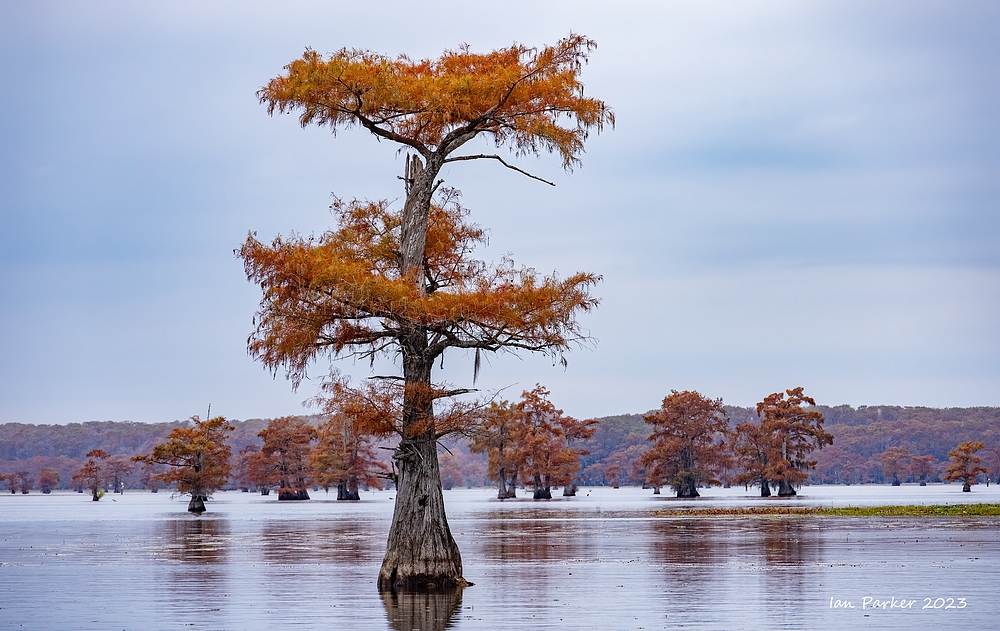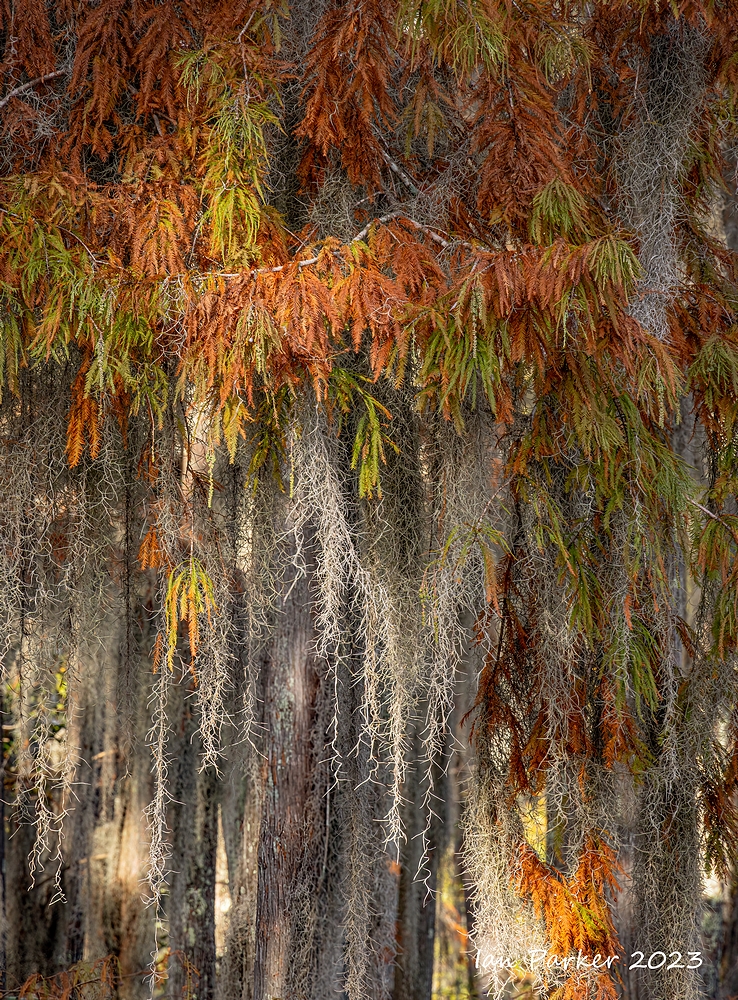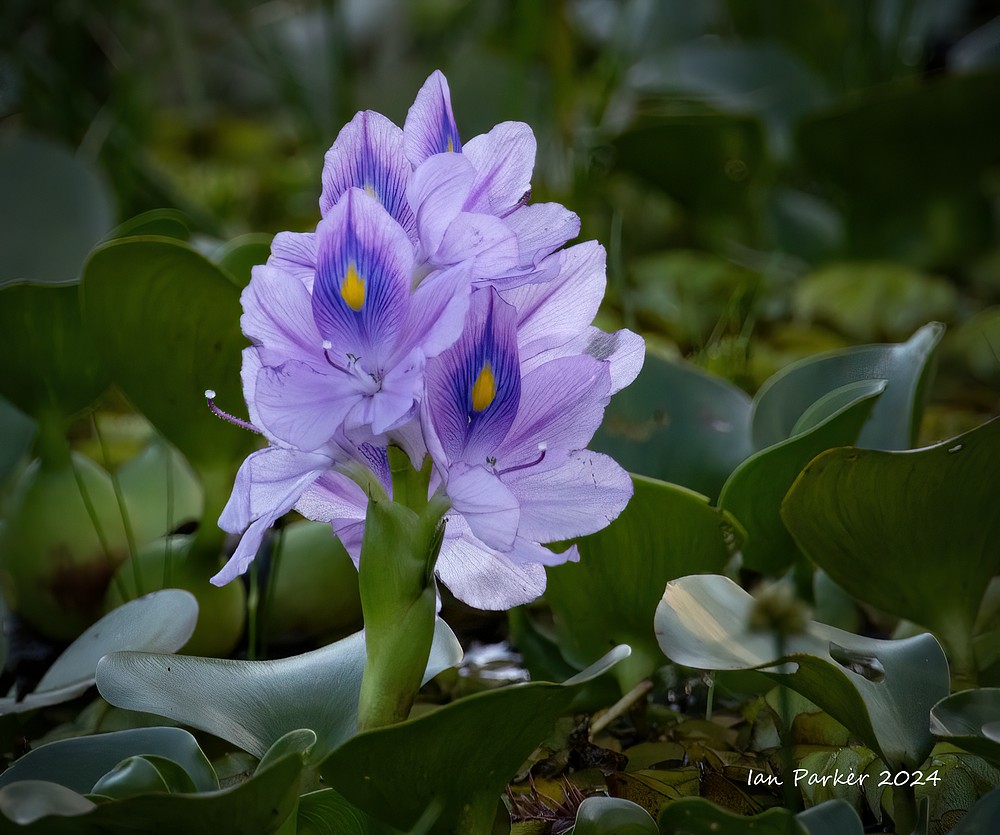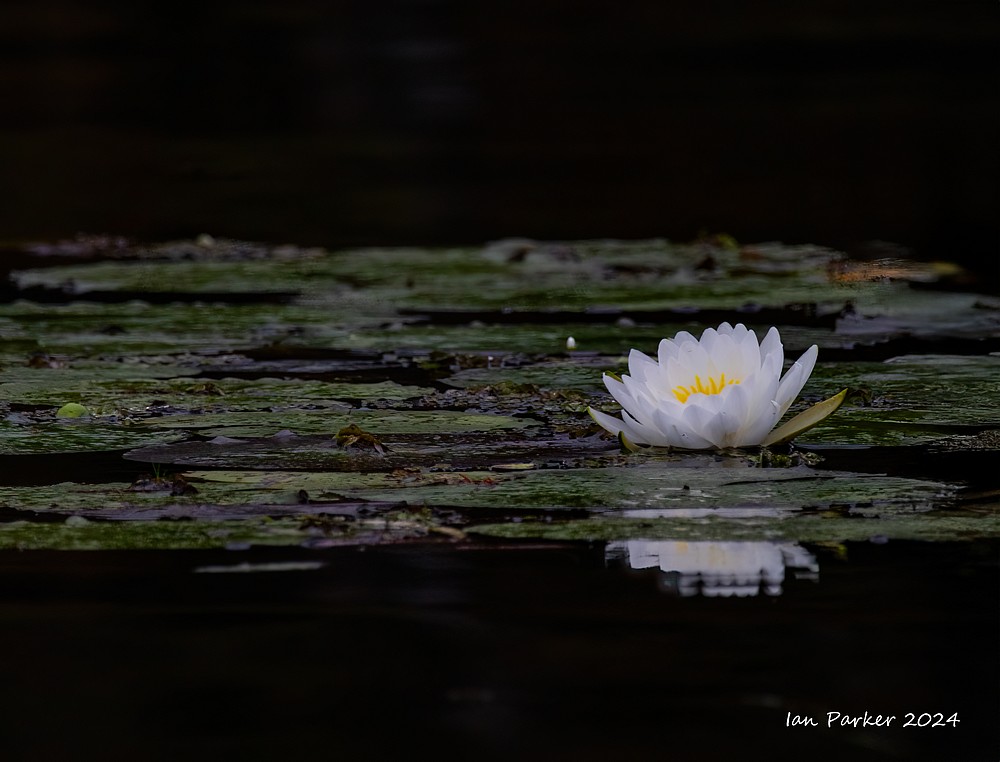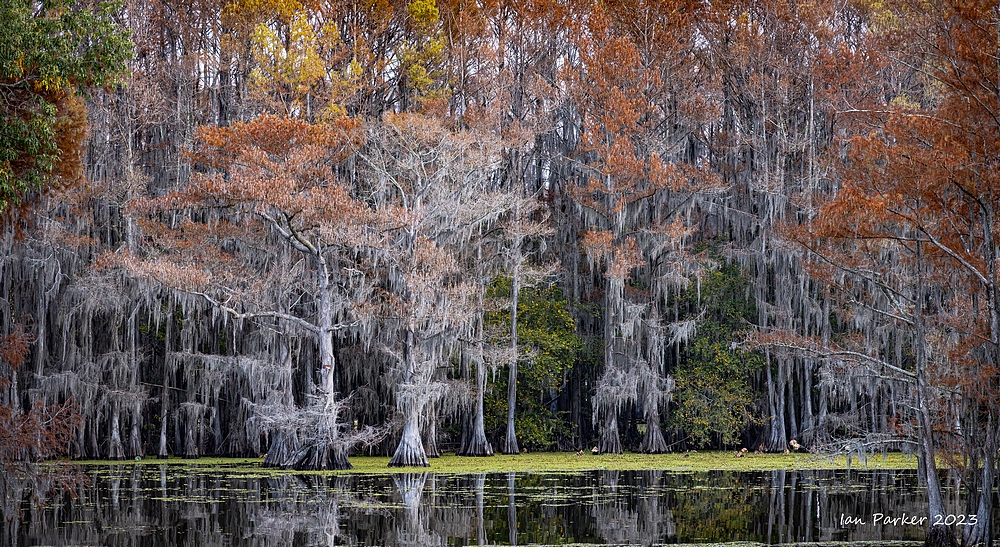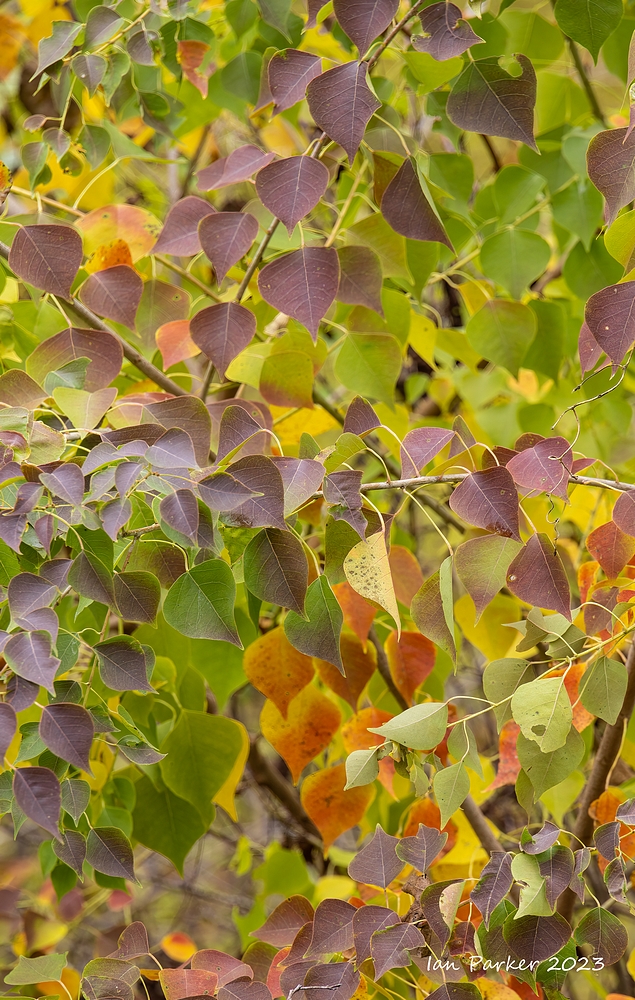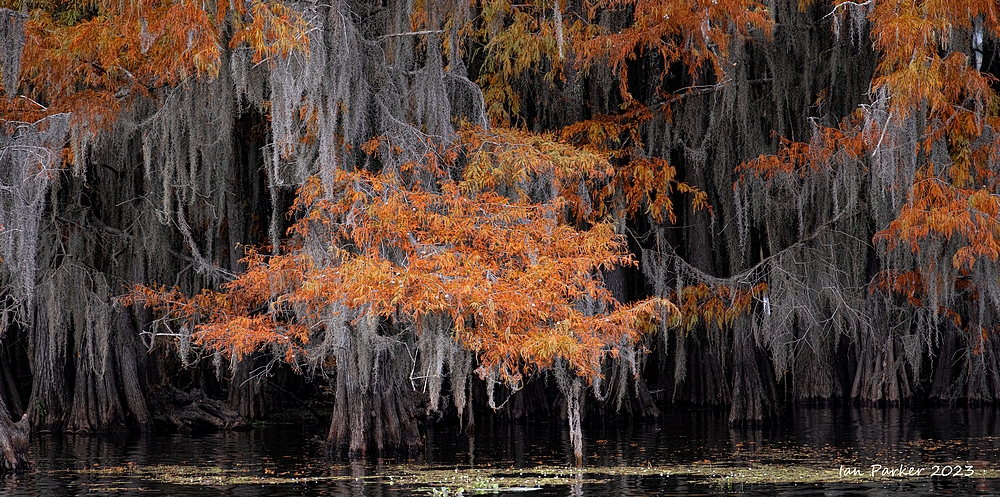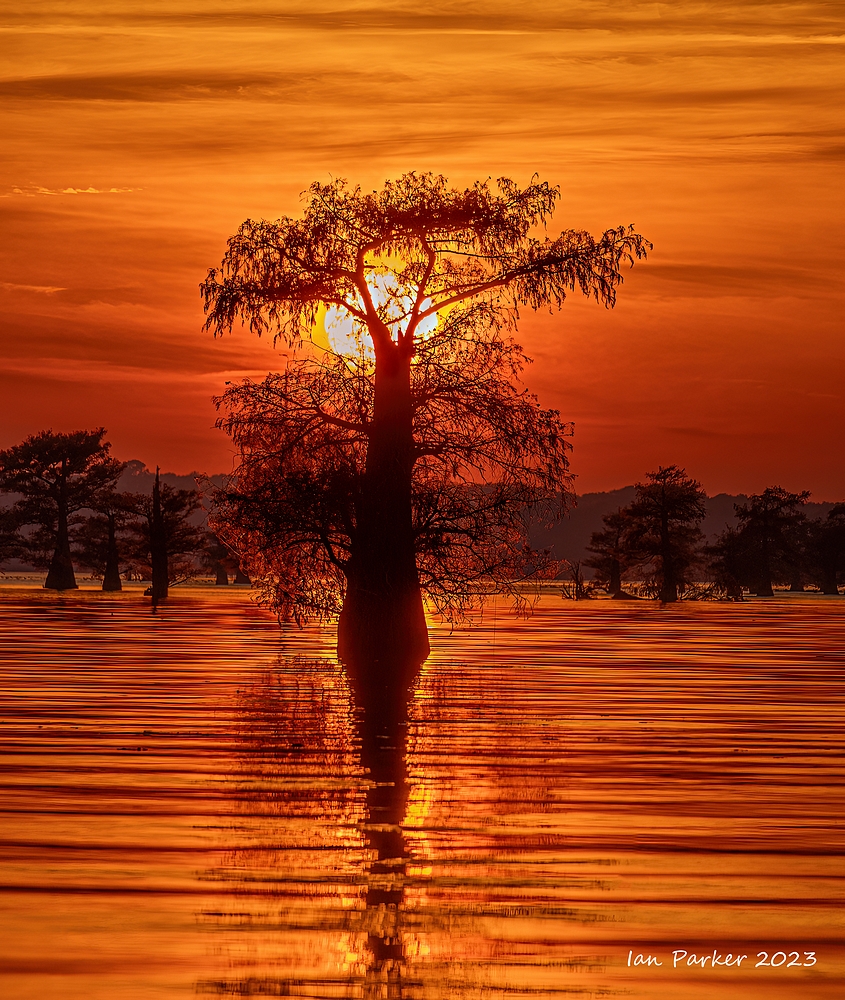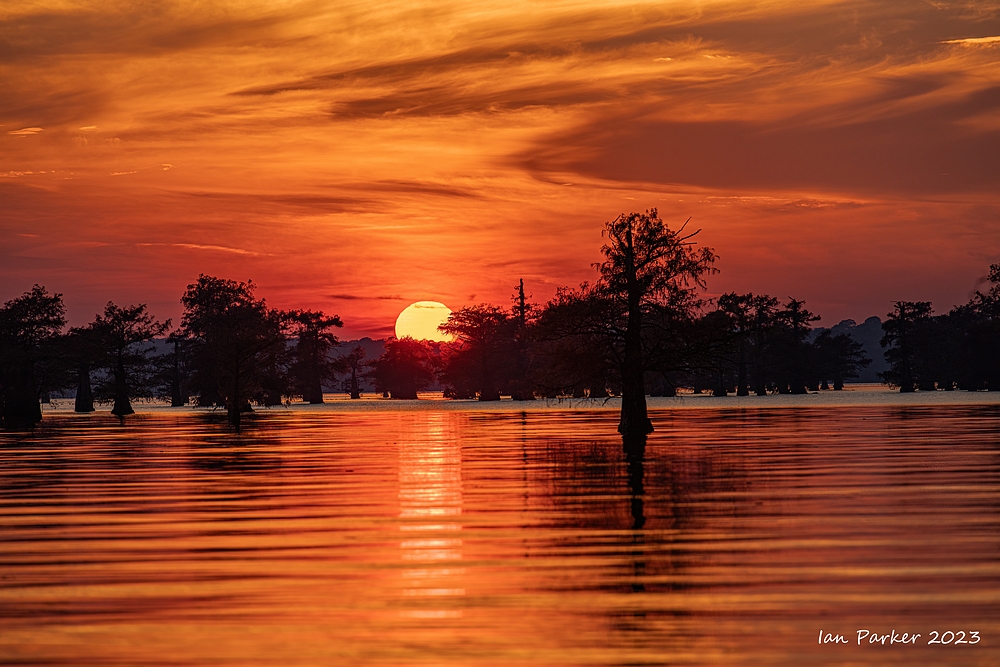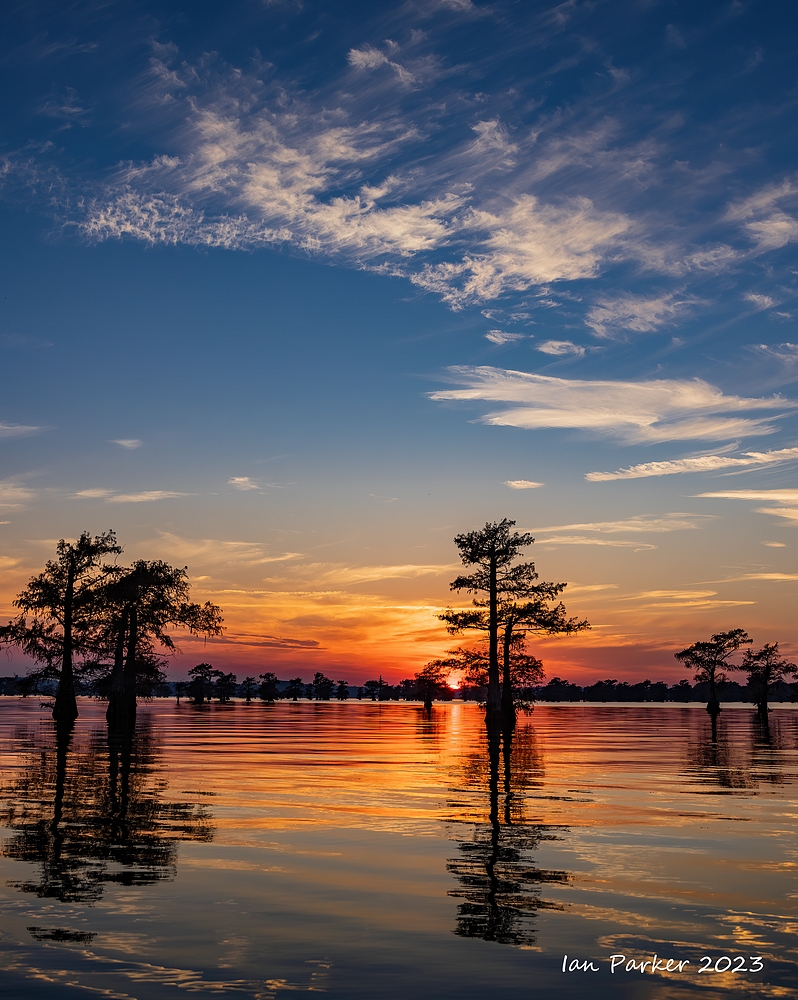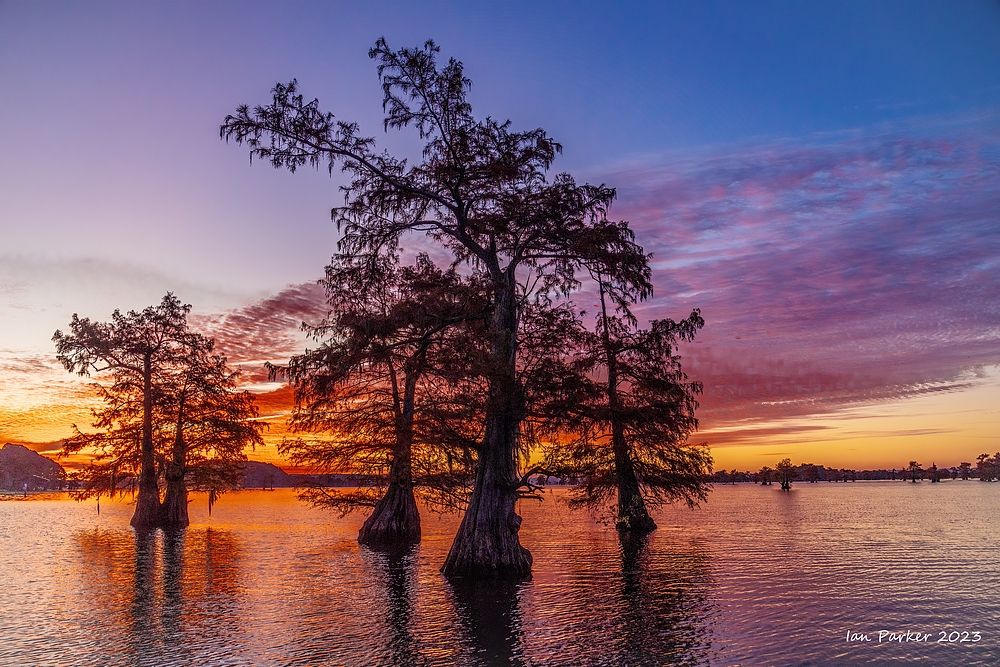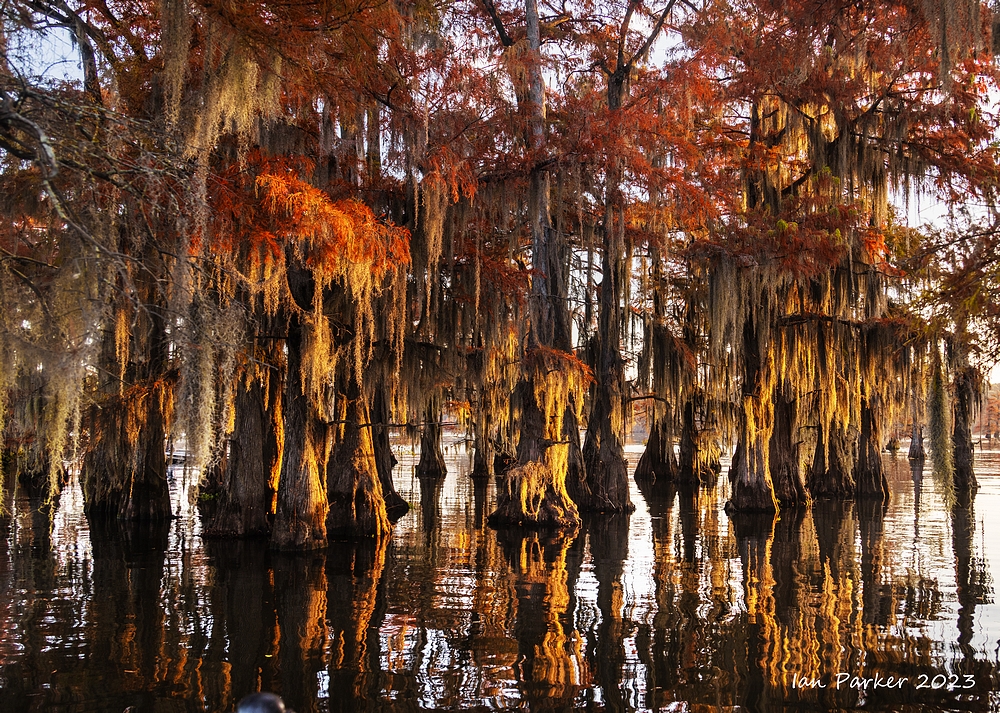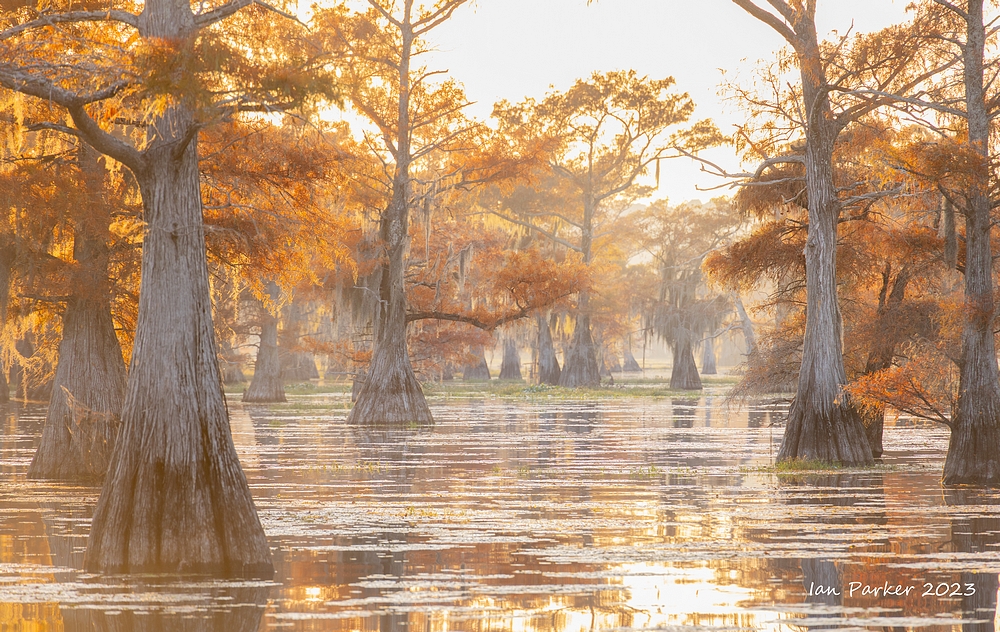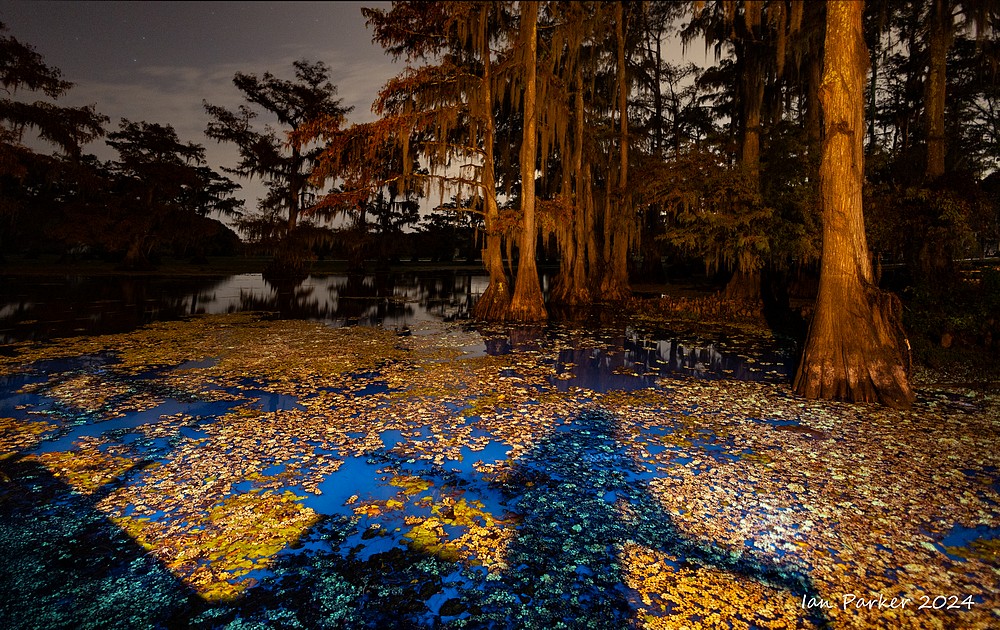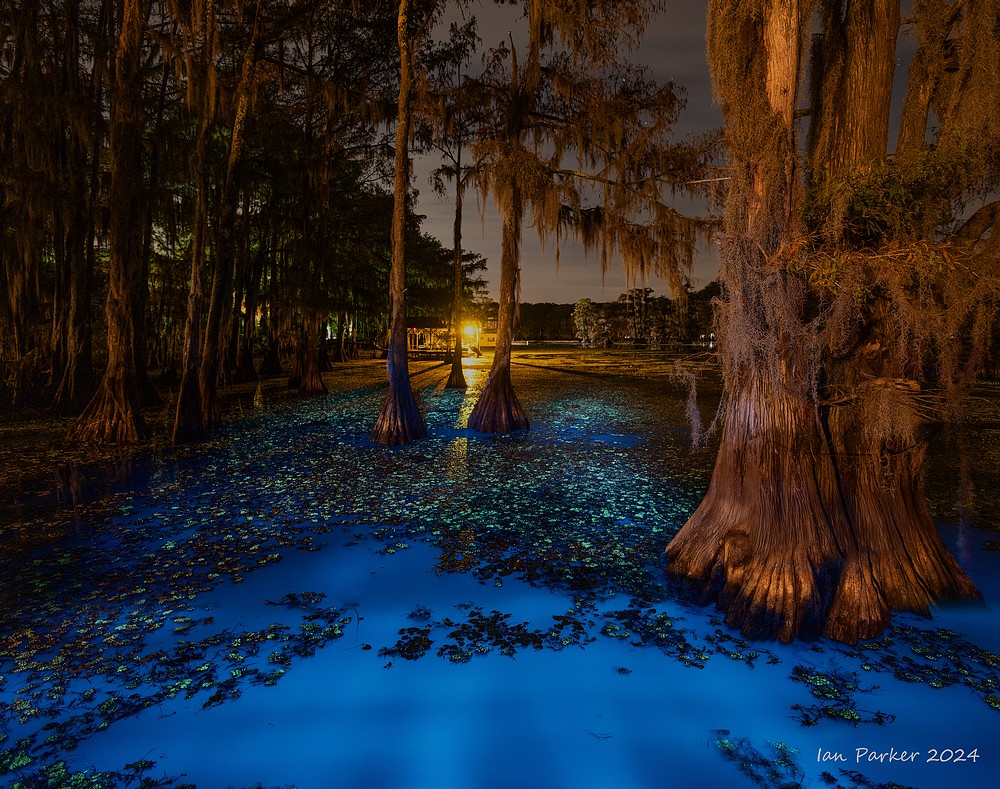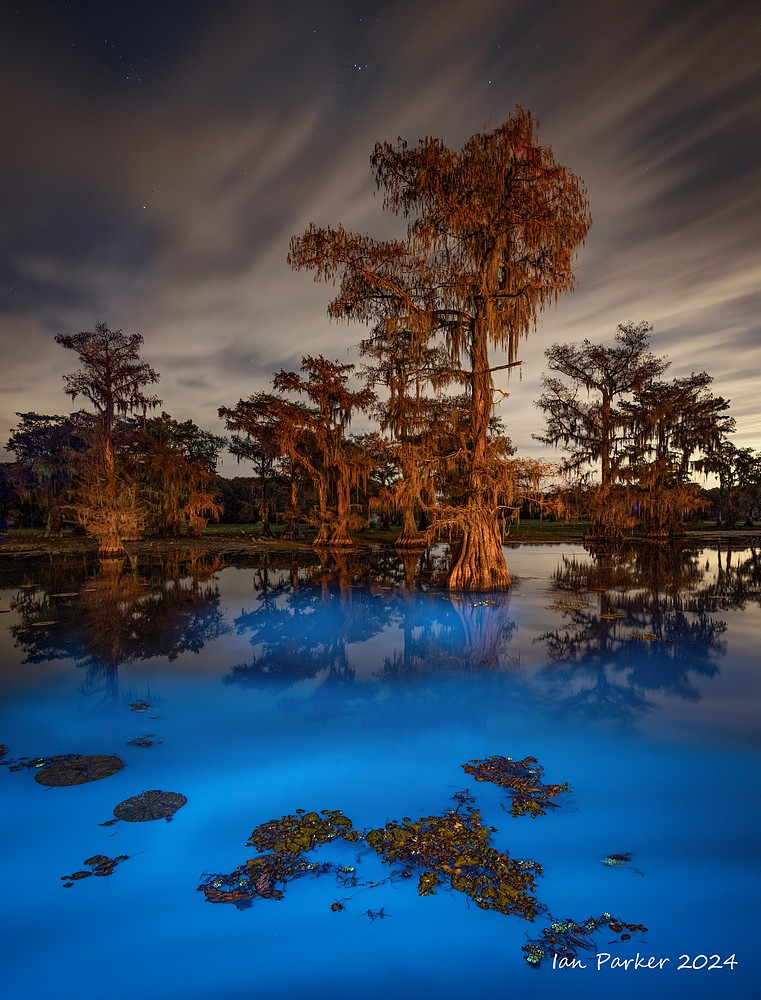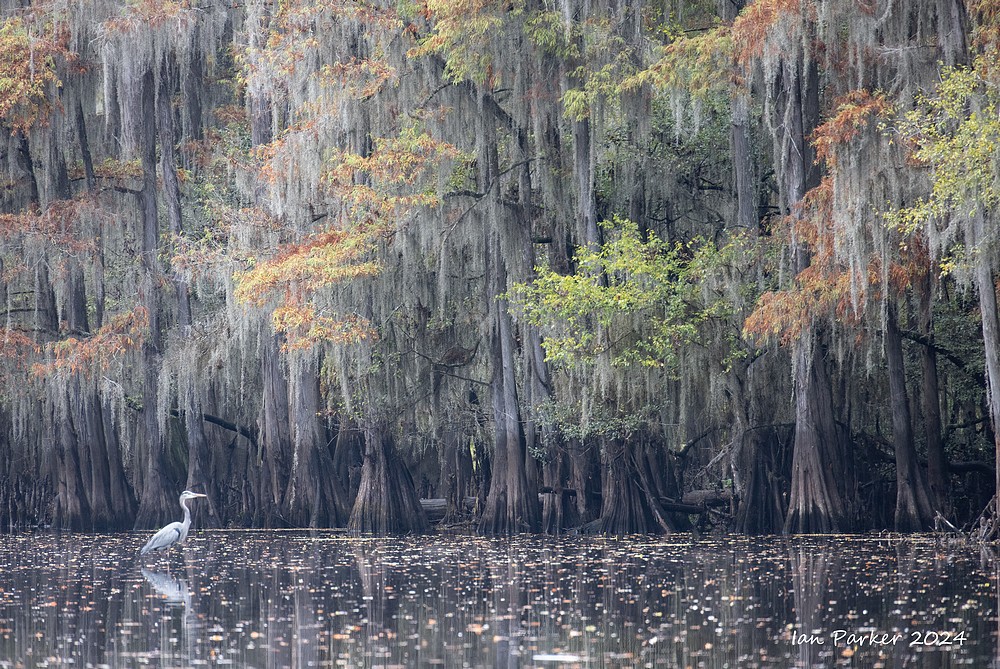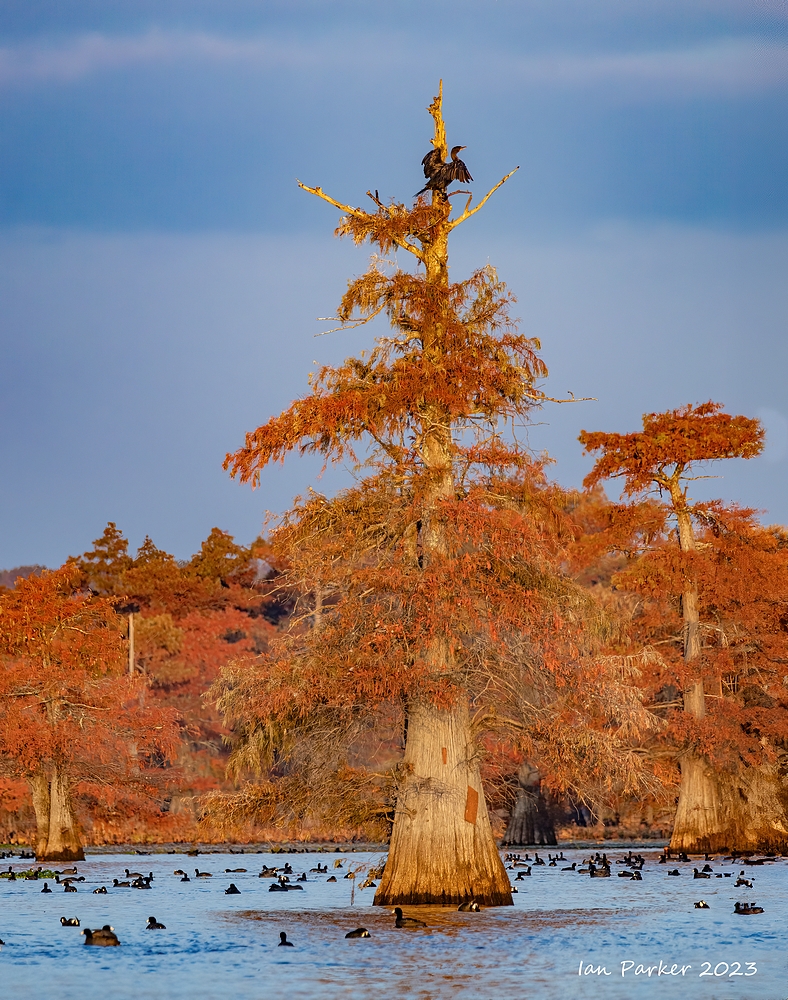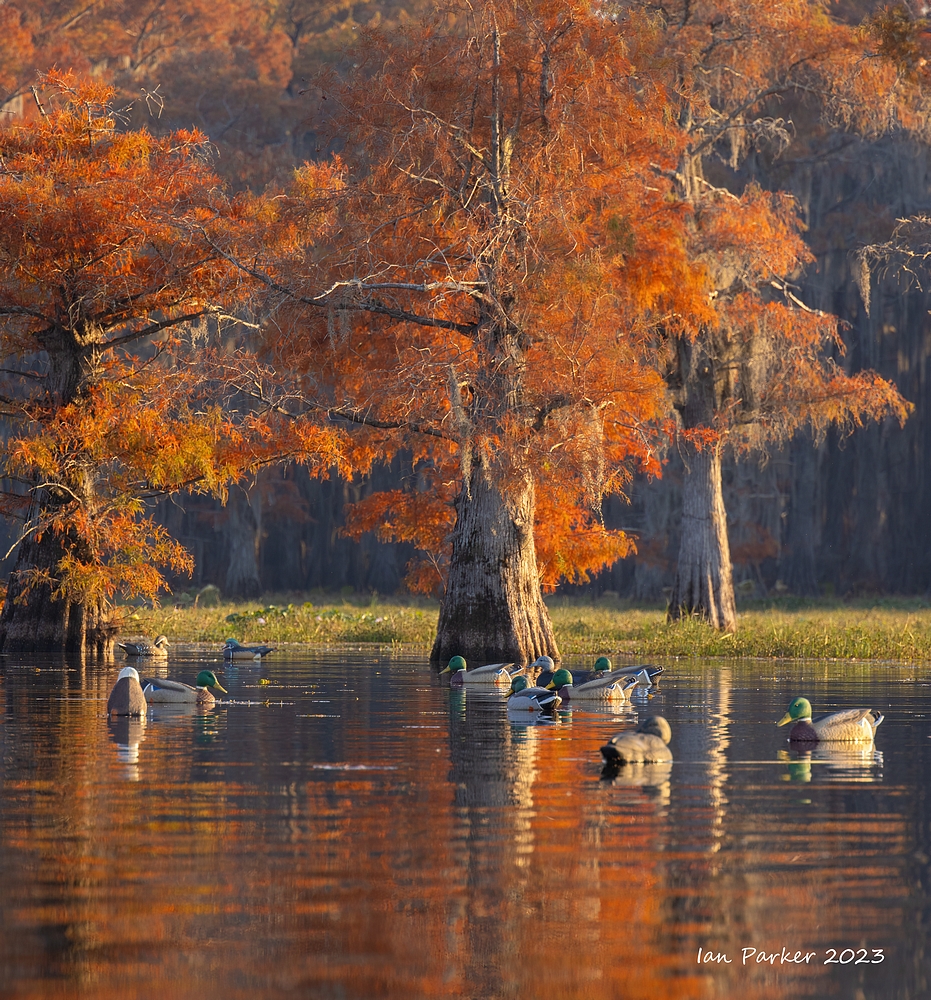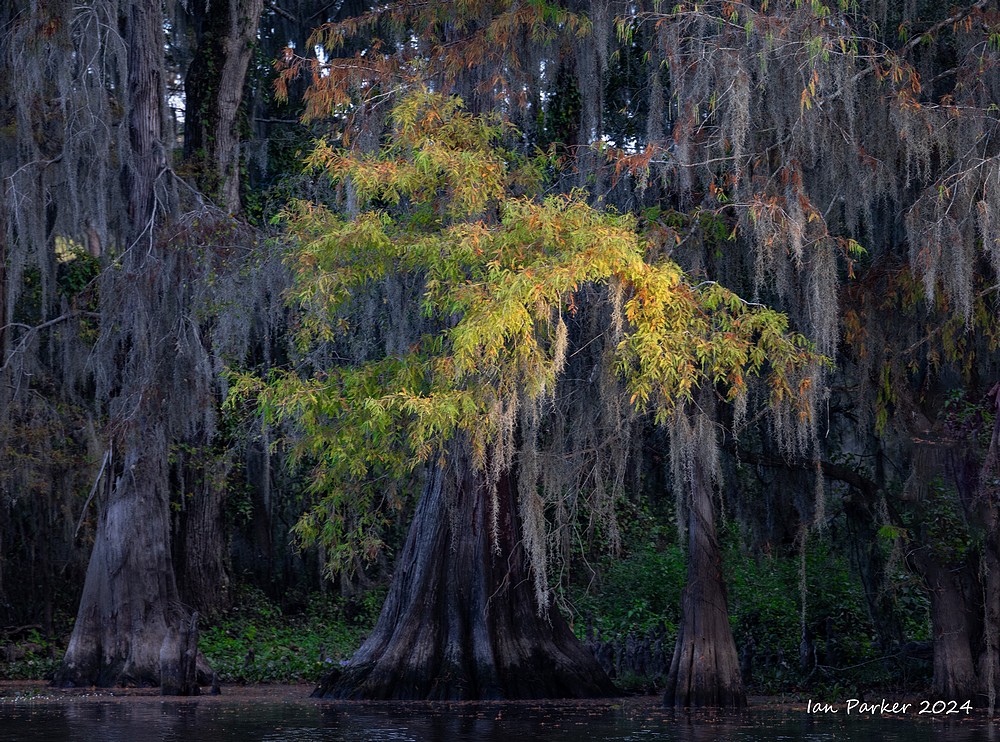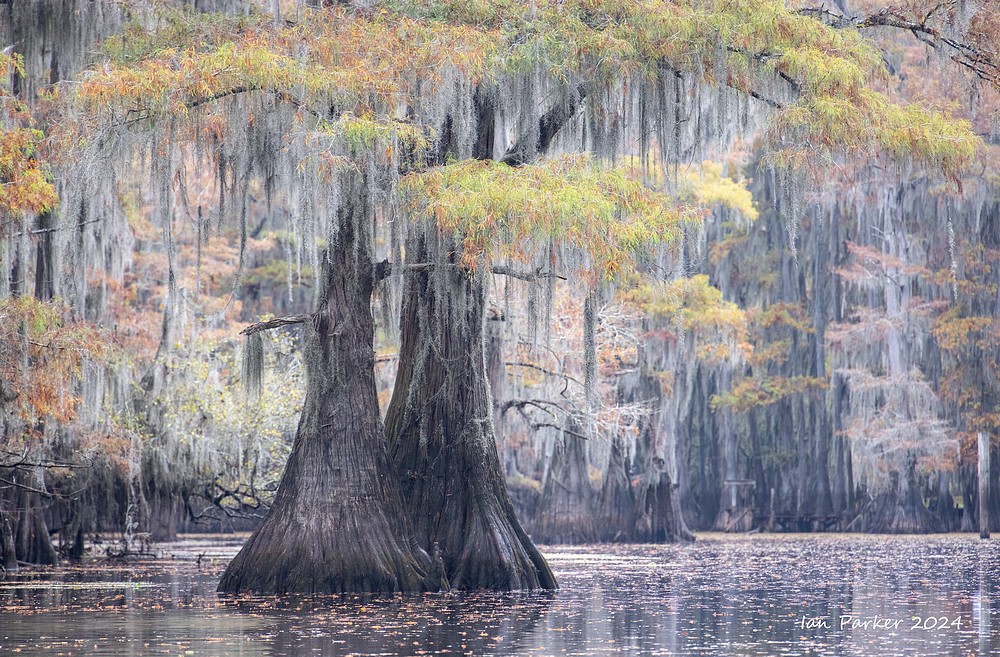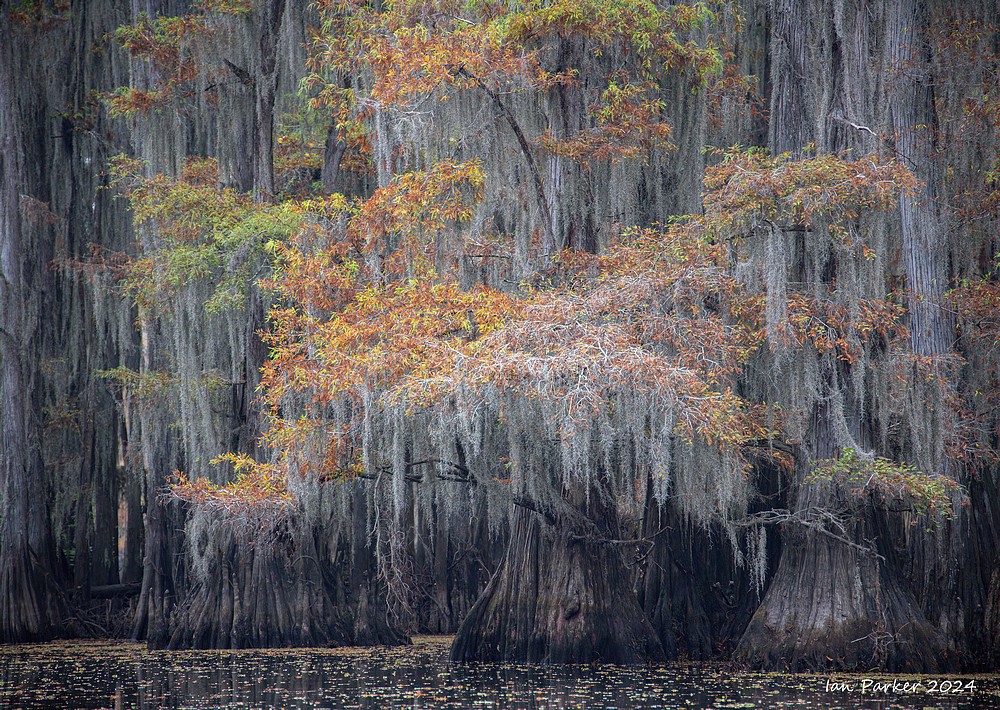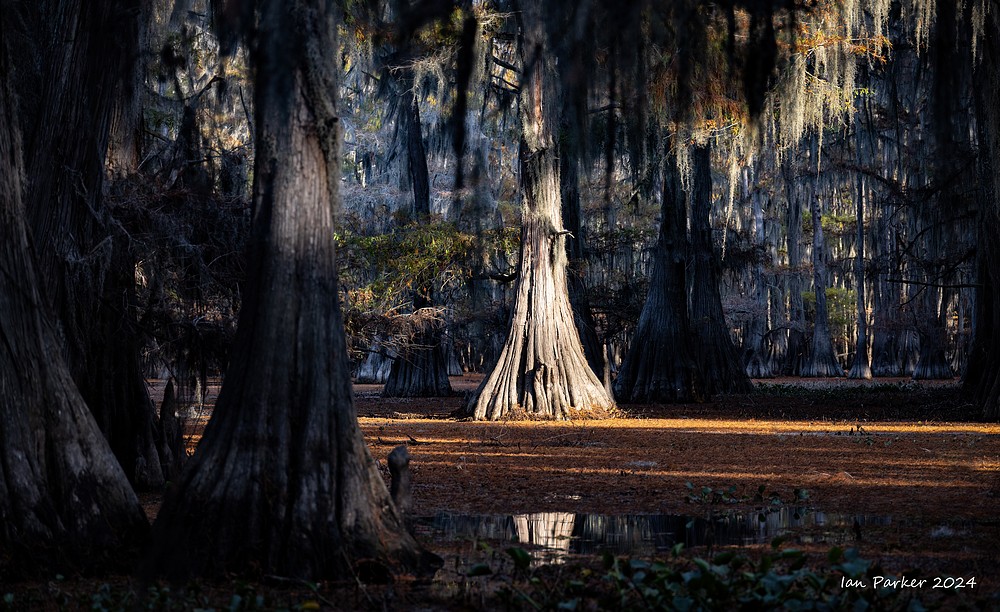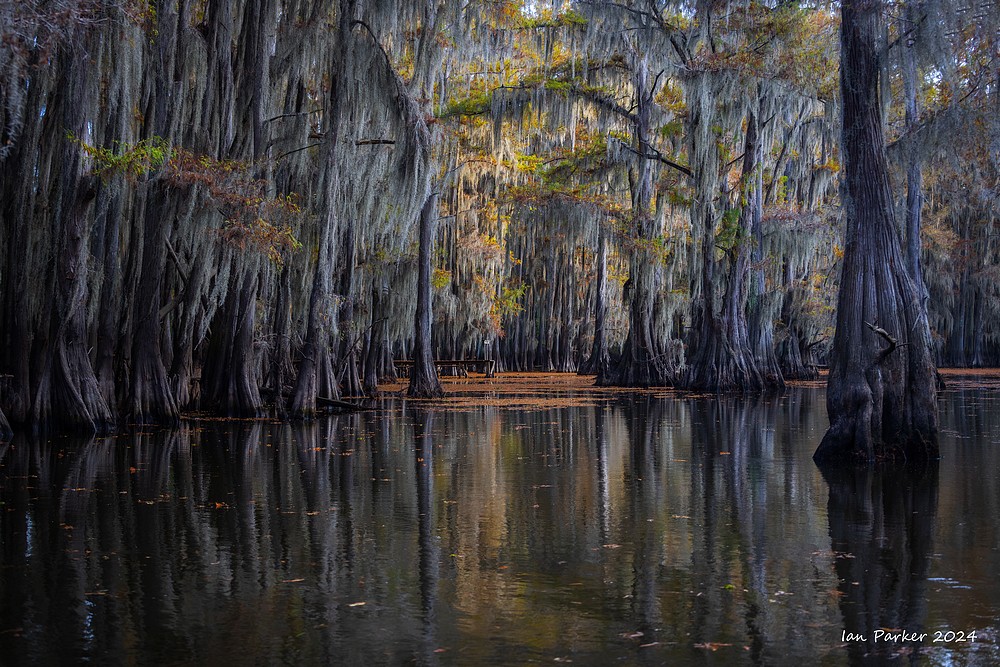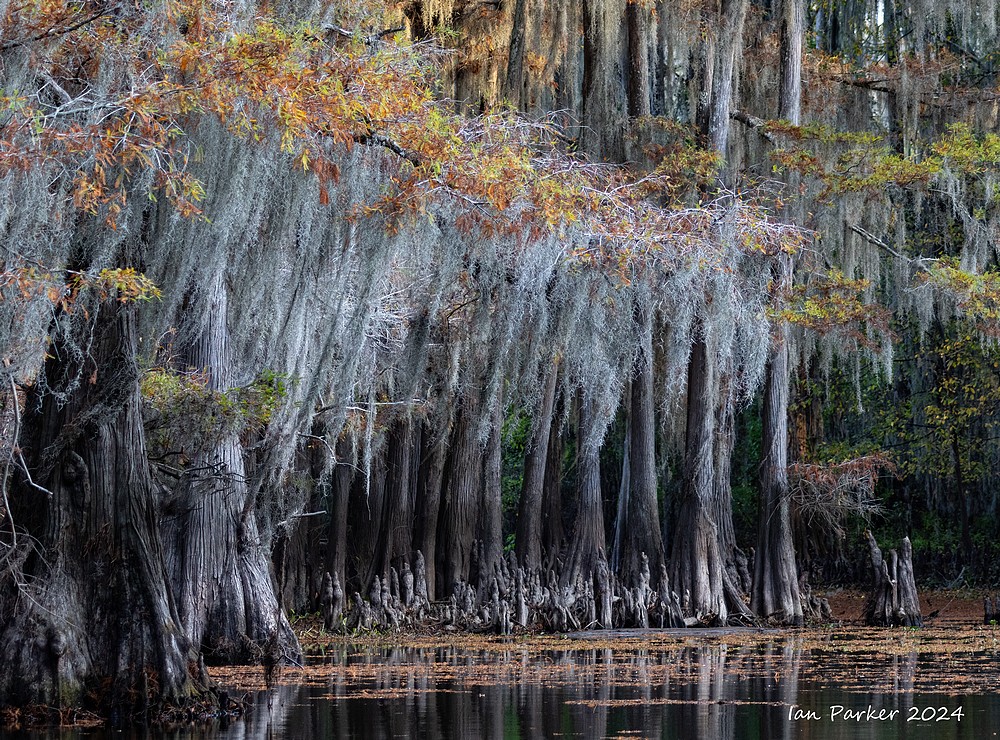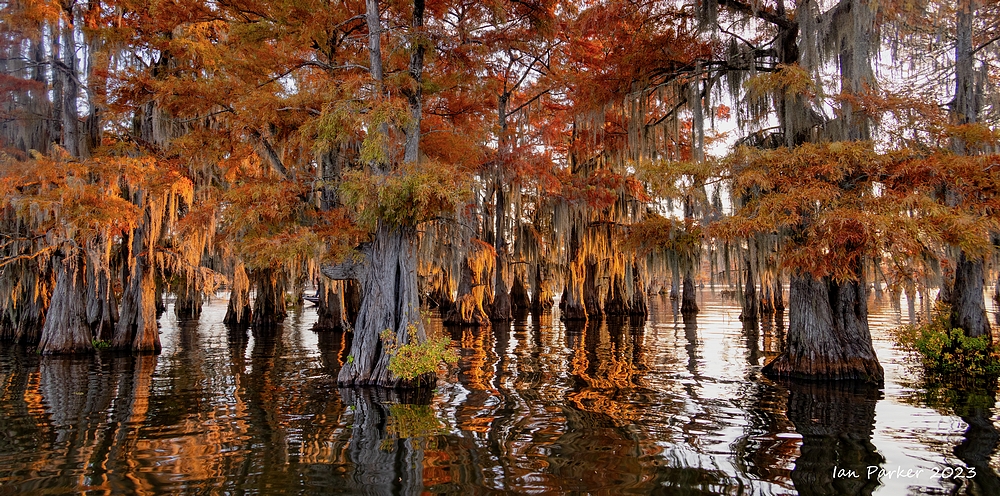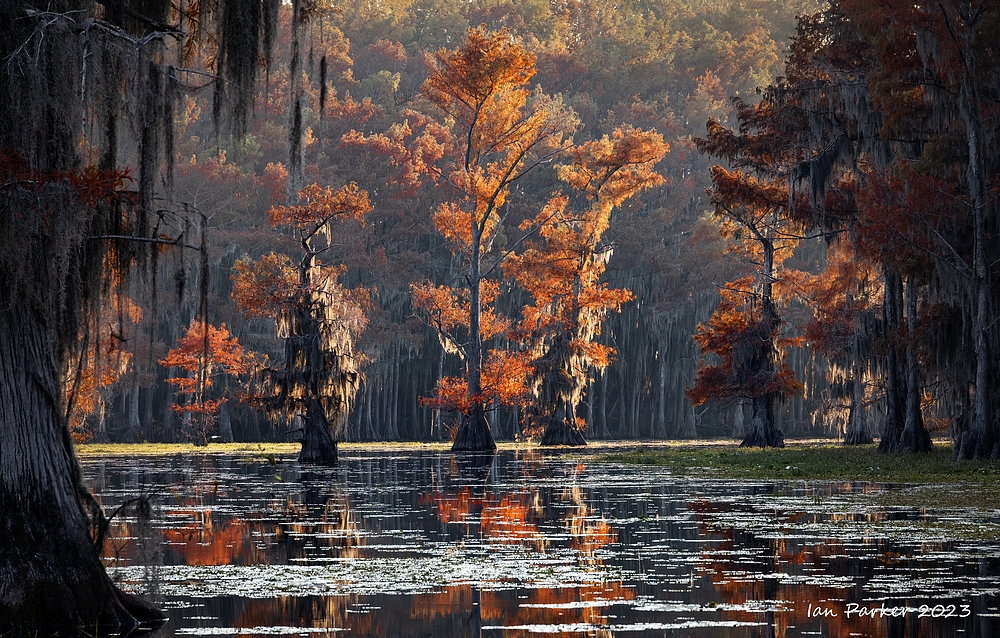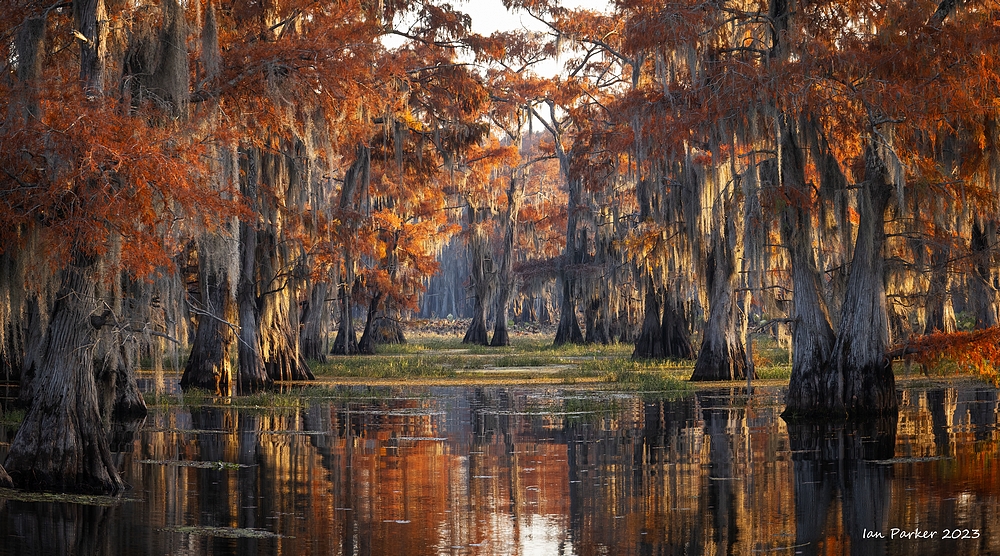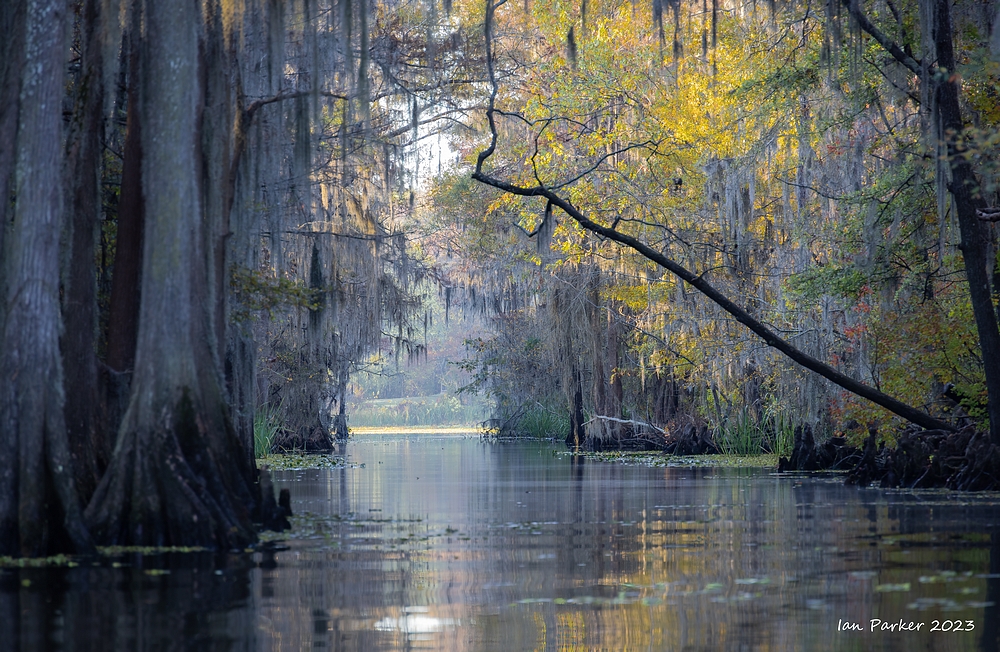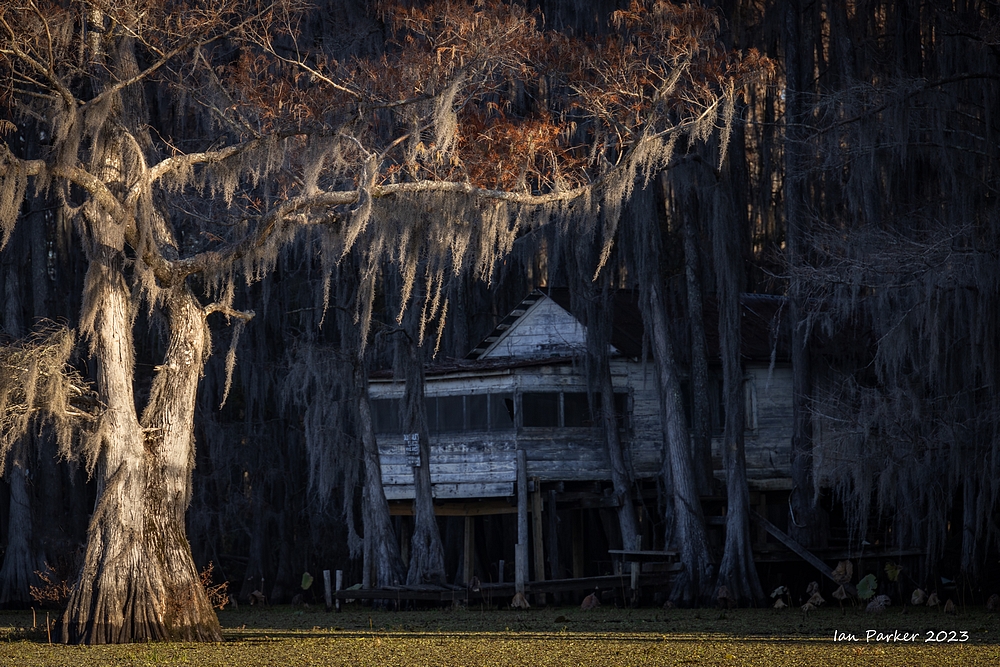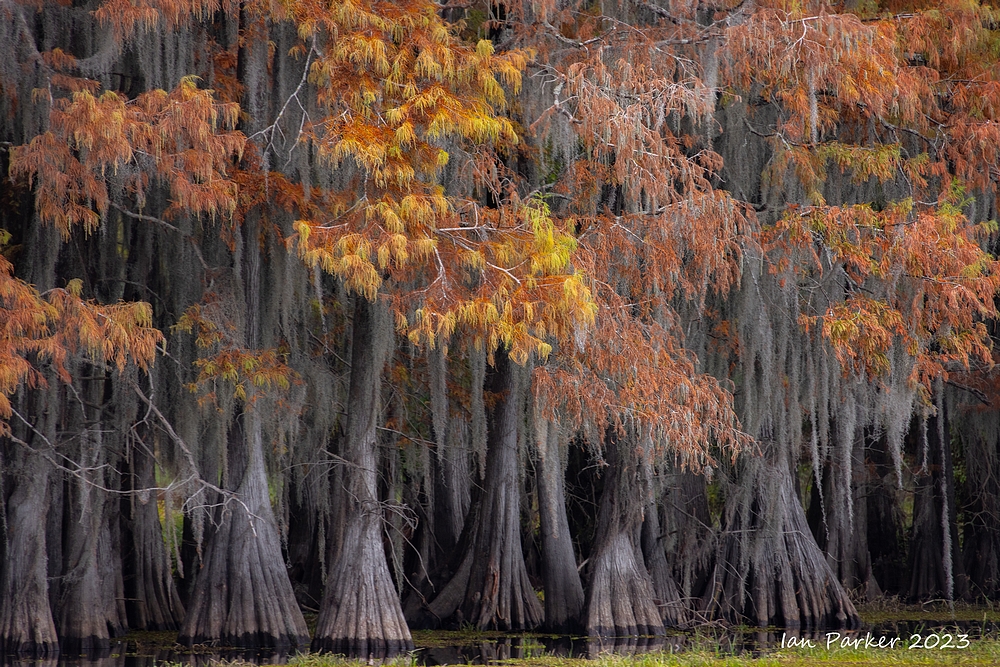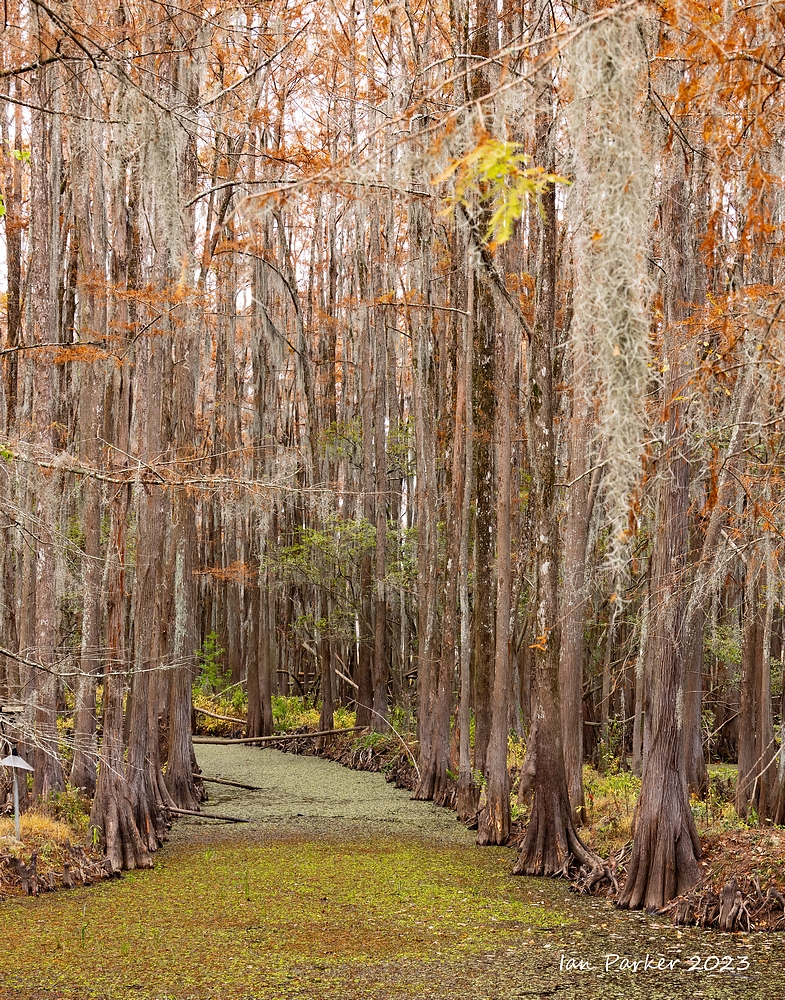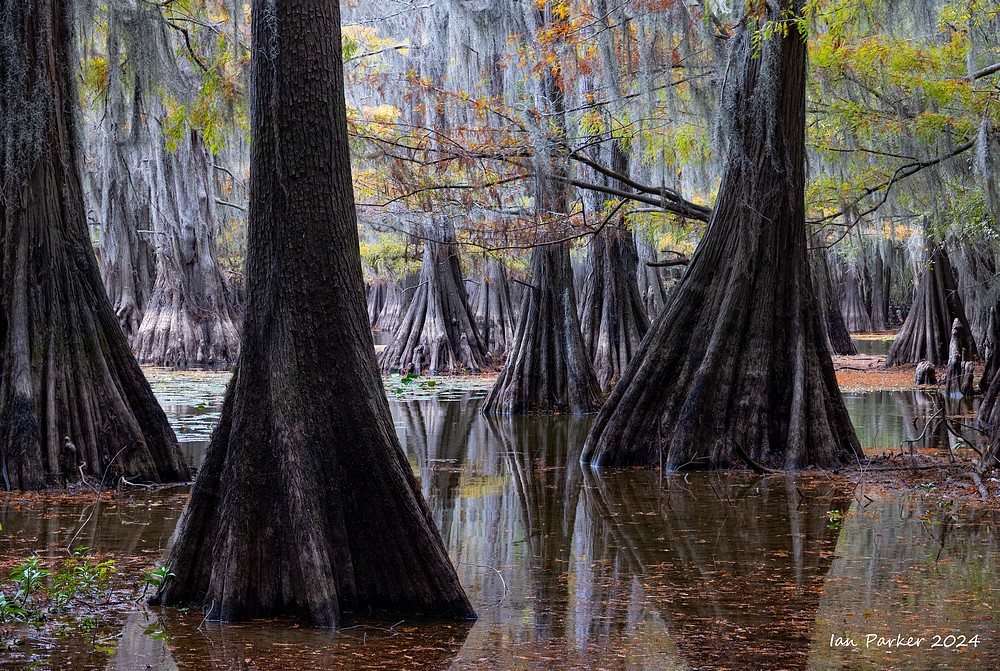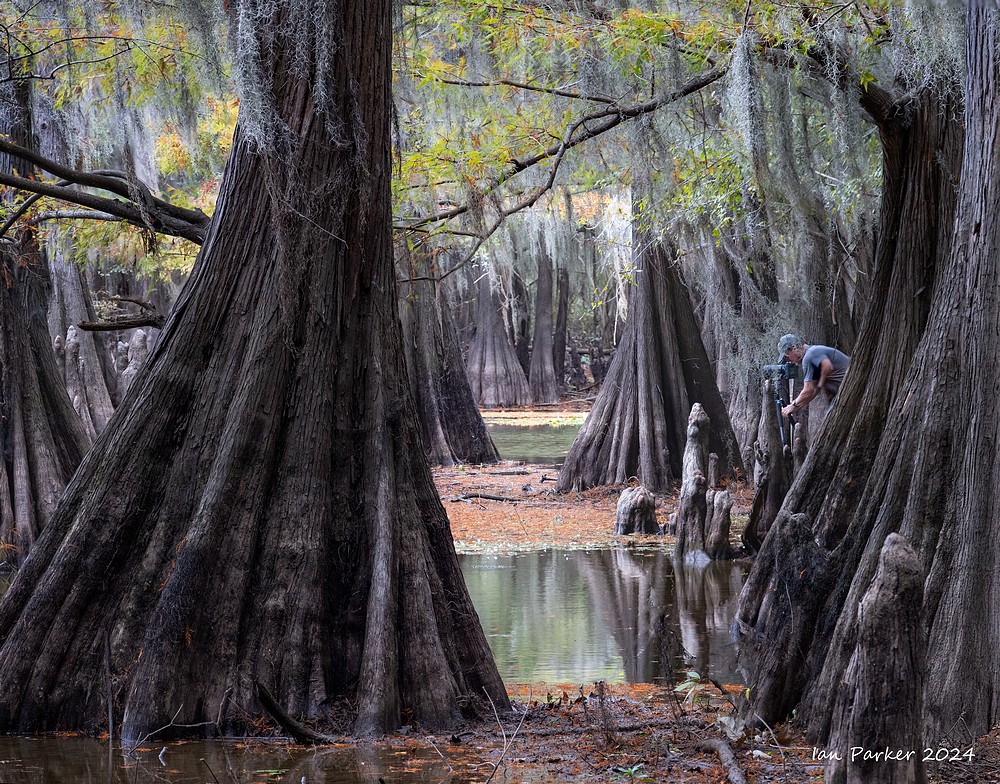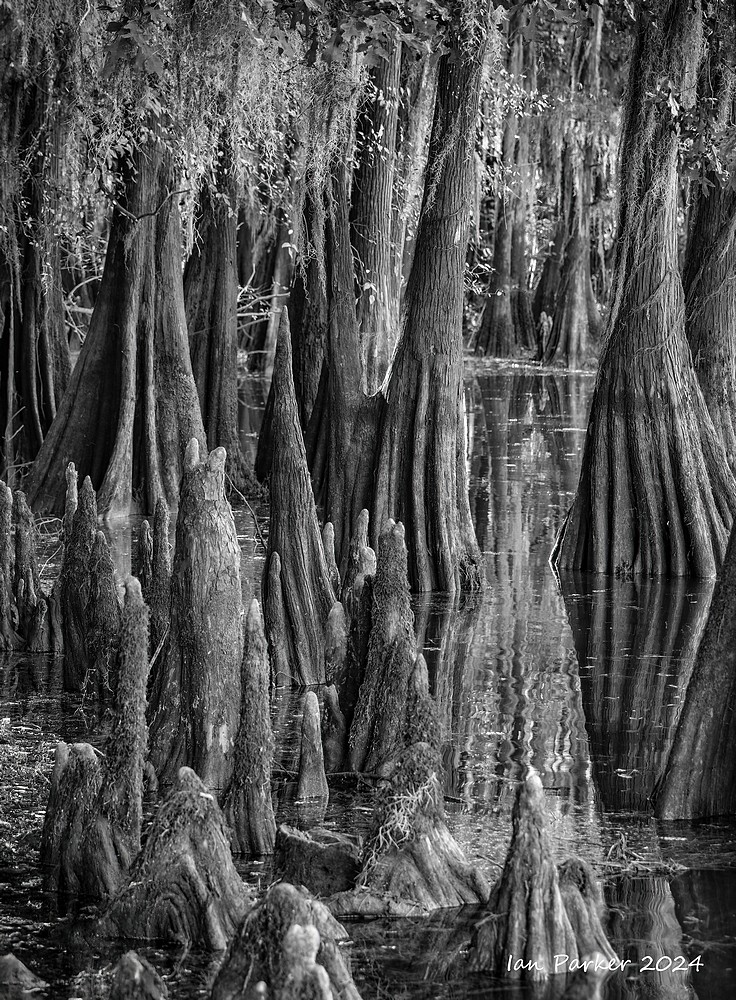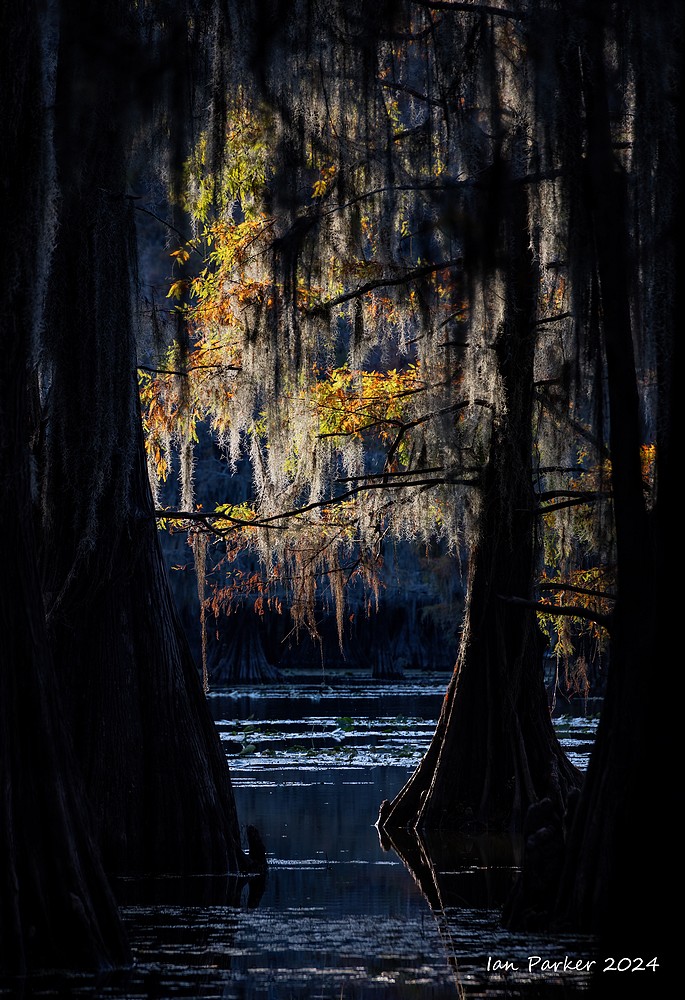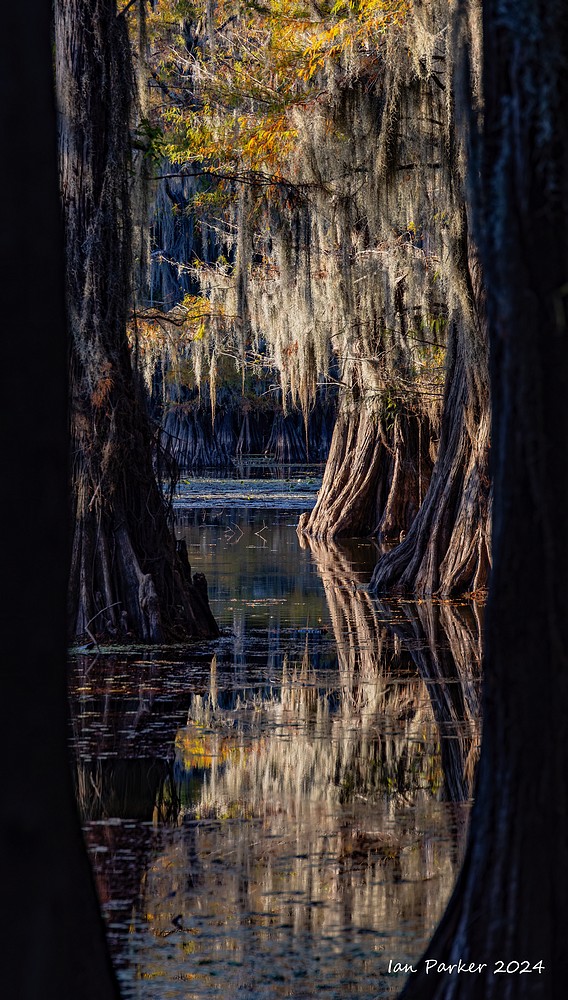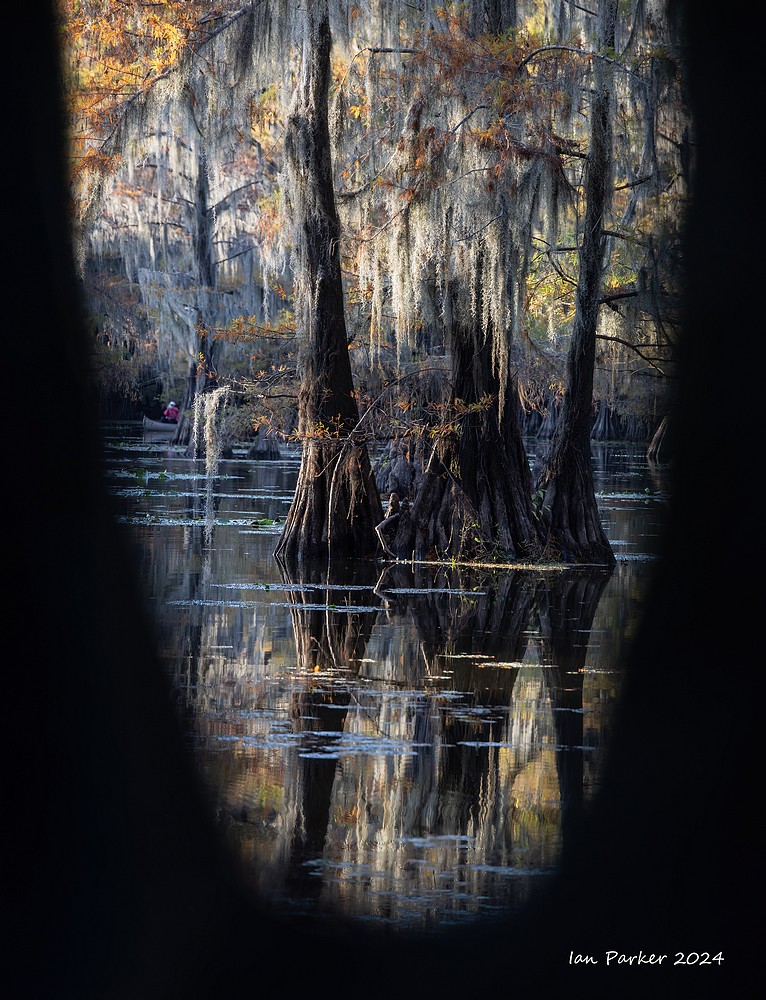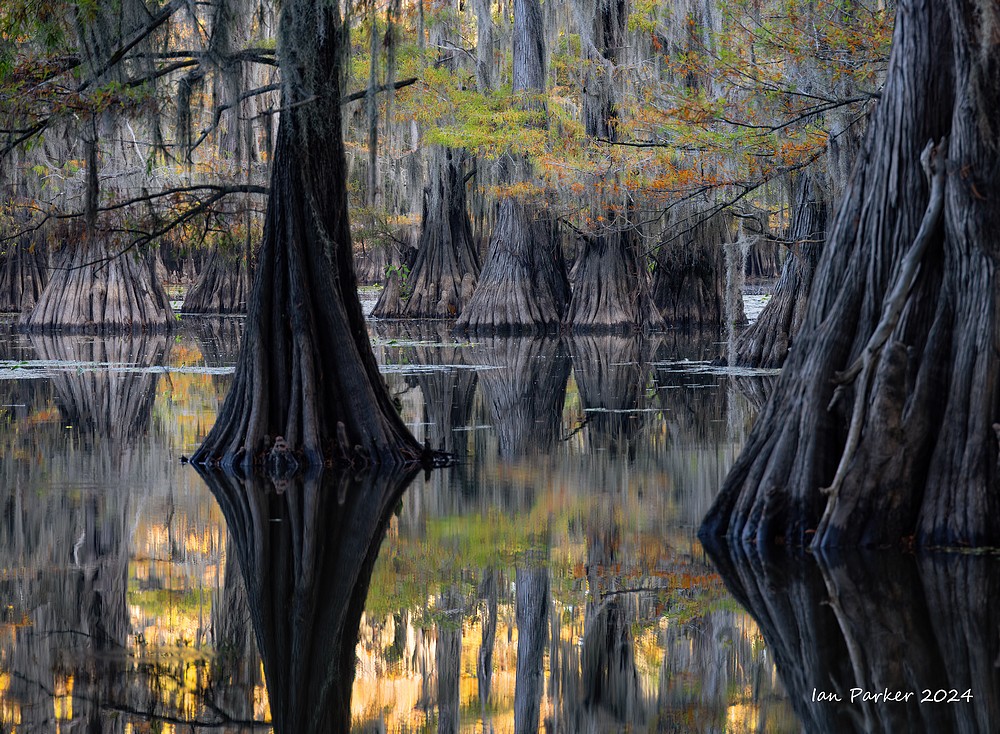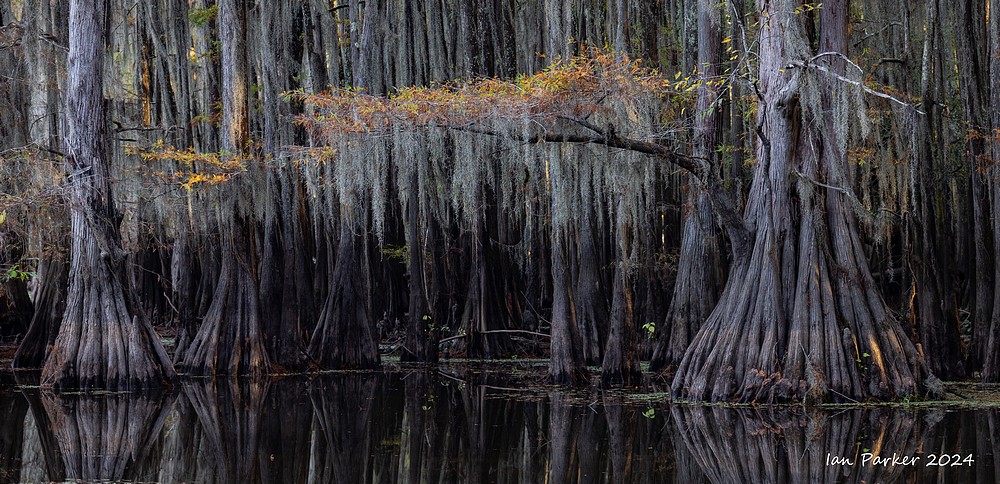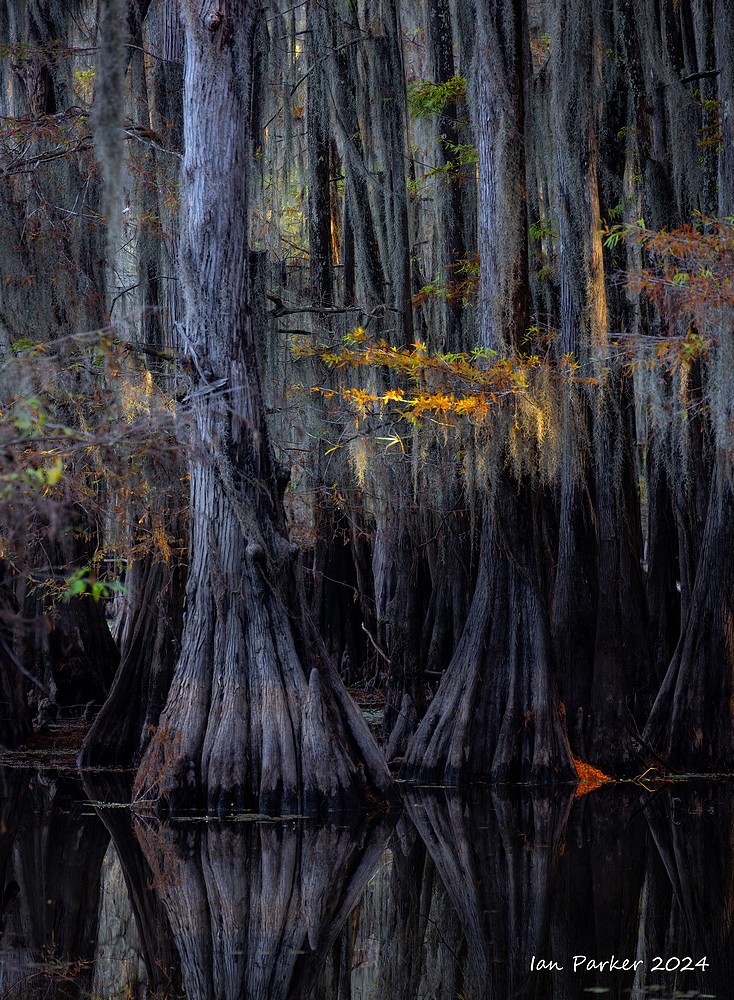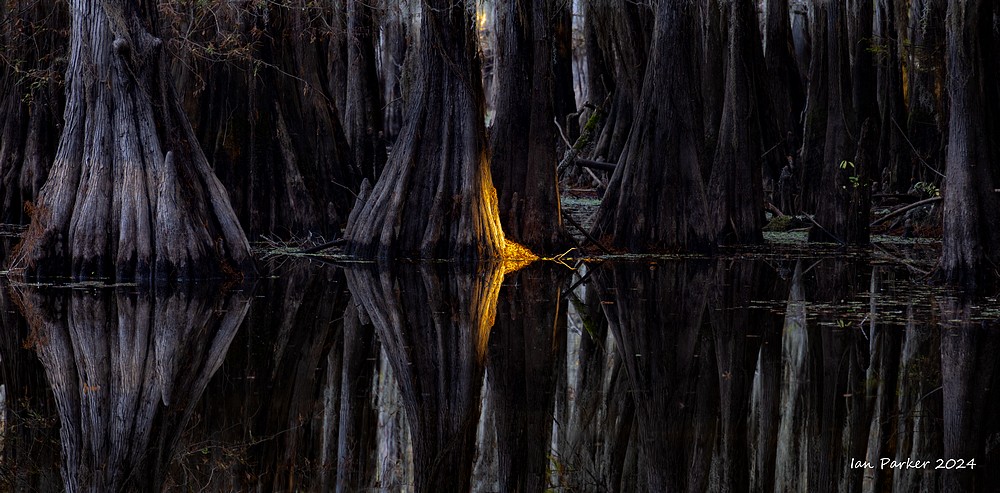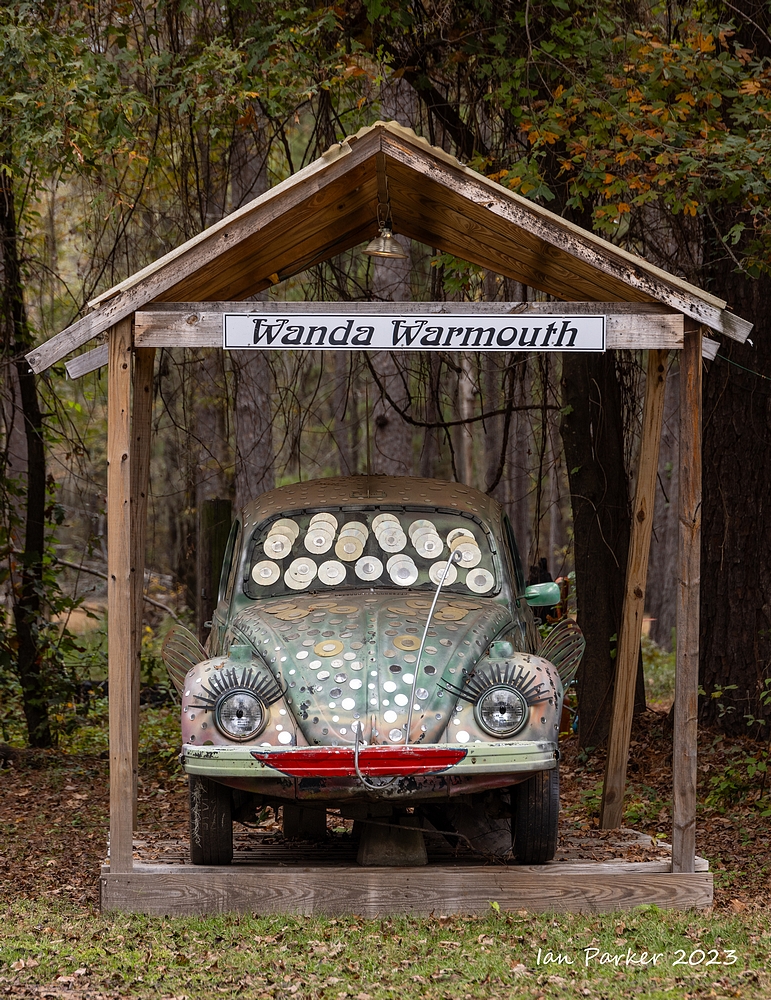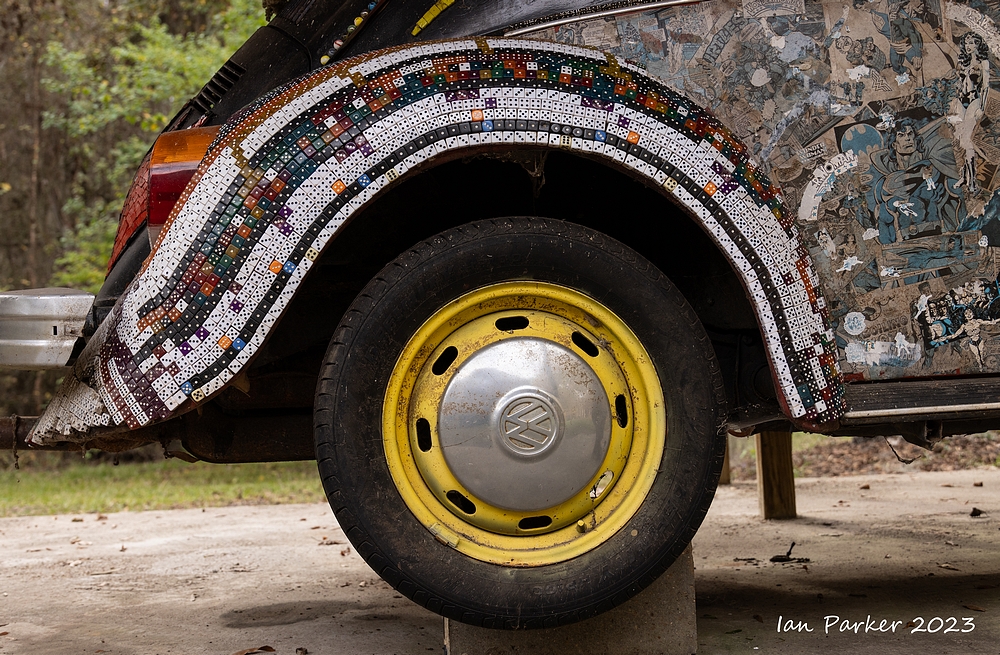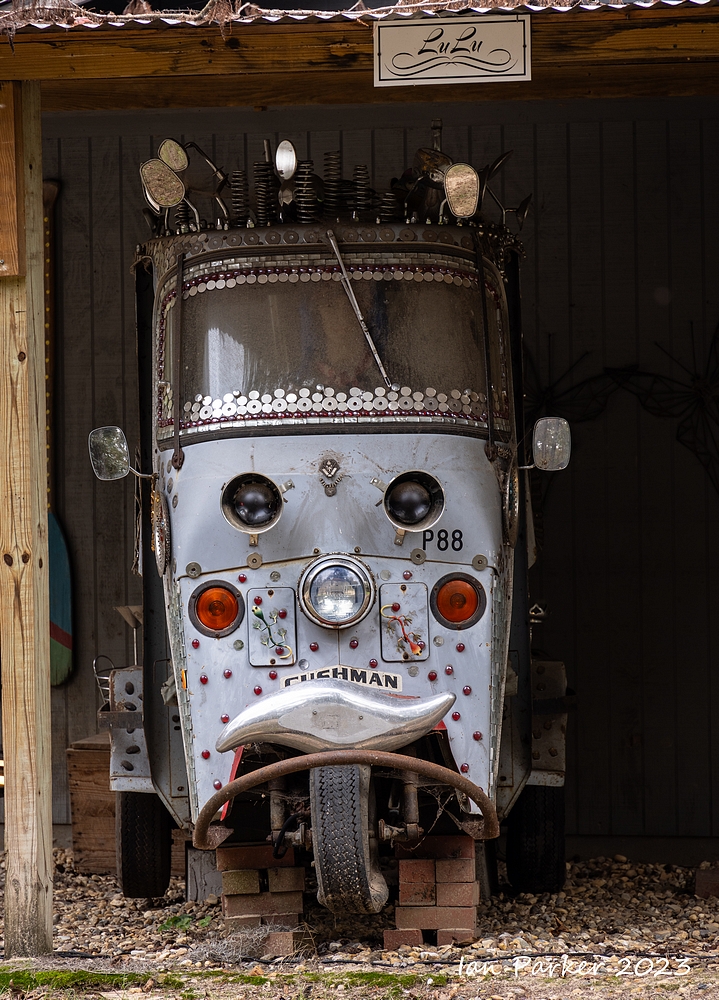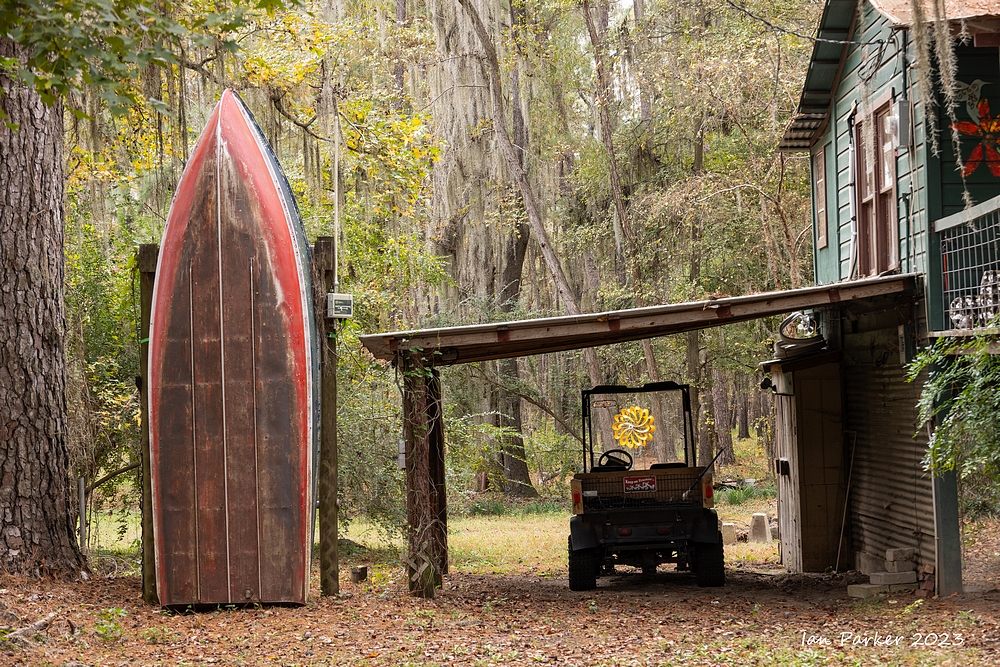|
People on the Lake
Cypress trees in isolation
Details
Sunset and sunrise light (2023)
Fluorescent photography at Caddo Lake (2024)
After my wife gave me a UV flashlight I have been looking for things that might fluoresce and make interesting pictures. Nighttime wanderings with the flashlight revealed that some lichens and plants fluoresced nicely. I was thus curious to see if the Spanish moss draping the bald cypress trees at Caddo Lake might glow in the dark. . On our first evening I made a preliminary reconnaissance to explore the photographic potential from the pier opposite the cottage where we stayed. A single, pole-mounted light bulb at the end of the pier cast an orange light onto trees out in the lake, but was dim enough to see that my UV flashlight evoked a clear blue fluorescence from the bark of nearby trees and the moss hanging from them. However, I was surprised to find that shining the flashlight onto the lake produced a more strikingr, cerulean blue glow from the water. I don’t know why this is so. Pure water does not fluoresce, so I presume the glow must arise from some tiny plants or organisms suspended in the murky lake. Moreover, the blue was a true fluorescence, as the well-filtered 365nm UV light from the flashliight is invisible to the eye, and is not captured by regular cameras.
The photo below was my first atempt to image the fluorescent lake. I had not brought a tripod with me, and in order to get a long enough exposure3 (30s) to capture the blue light I stabilized my camera on a wooden railing at the edge of the pier while scanning the UV flashlight across the surface of the water. Looking at the camera screen I could see the surrounding trees, and vegetation on the lake lit up in orange by the light on the pier, whereas in shadowed areas cast by the railings and my body the water glowed blue.
The next evening, I returned to the pier equipped with a tripod to make more deliberately composed images. The end of the pier lacked any railings, and from there I could set up my tripod to frame compositions where the pier light uniformly illuminated the surrounding trees and lake without casting any shadows. The two photos below were aquired with a shutter opening of 30 seconds (at f2.8 and ISO 1600) that gave a good exposure for the trees. However, my flashlight was not powerful enough to fully illuminate the lake surface in this time so these images are thus composites of three or four sequential exposures, successively scanning the UV light across more distant parts of the lake.
Birds
Treescapes and Waterscapes
Saw Mill Pond at Caddo Lake State Park. (2024)
Access to the shoreline at Caddo Lake itself is difficult, as this is almost entirely private property. To photograph the lake thus requires venturing out afloat, by kayak or boat. I had booked morning and evening excursions with Paul Keith on his small speedboad. He would quickly motor out to promising areas on the lake, then shut down the outboard motor and use an electric trolling motor to slowly and silently maneuver around. As he is an expert photographer I generally just followed his lead in finding good compositions. Nevertheless, I did miss the ability to wander arouud on foot to carefully select my own subjects and camera angles.
A visit to Caddo Lake State Park provided this opportunity. Despite its name, he State Park does not actually encompass Caddo Lake, but is set around Saw Mill Pond; a miniature version of Caddo Lake. The shoreline of the pondis is readily accessible, if swampy, and wraps around a dense forest of cypress trees. Sunset gave good lighting, by trees on slopes to the east largely blocked sunrise light.
Whimsical Art Installations on Taylor Island
The whimsical, creative spirit of Dottie Carter is found in art projects around her Spatterdock Guest houses on Taylor Island. Dottie Carter and her pal, Patty Lovelace, with their creative and whimsical spirits, create mosaic pieces, large and small. Most of the friends' work are on Taylor Island, where all but one of the Spatterdock Guest Houses are located. VWs can be seen near the road at Frog Trot (Super Heroes), Barnstormer (Volksfroggin) and Spatterdock (Baby Buddha and the Teapots).(Wanda Warmouth) is across the road
updated 12/20/2024
| IanParker 1146 McGaugh Hall University of California, Irvine, CA 92697 |
Please send enquiries to |
BACK TO > |

